|
|
Post by bixaorellana on Jan 10, 2019 4:34:34 GMT
Here is my report on Ghent, a city at the confluence of the Scheldt and Leie rivers in Belgium,
where I touched down on June 24 this past year for four nights.
The tram from the train station goes right past the astounding landmark of Gravensteen, a medieval castle in the heart of Ghent's old town ~
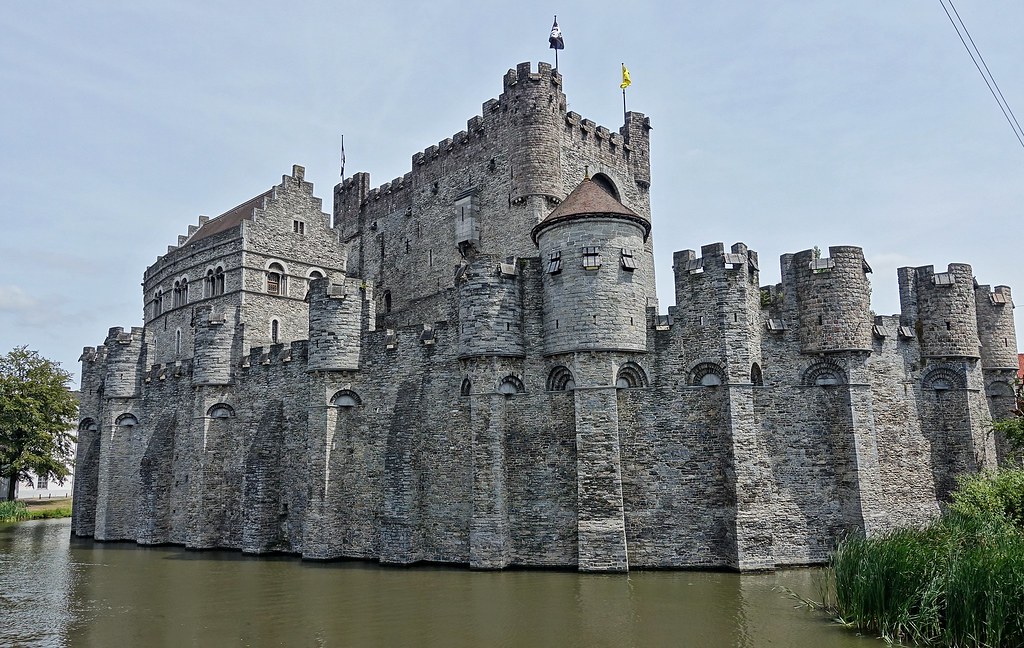
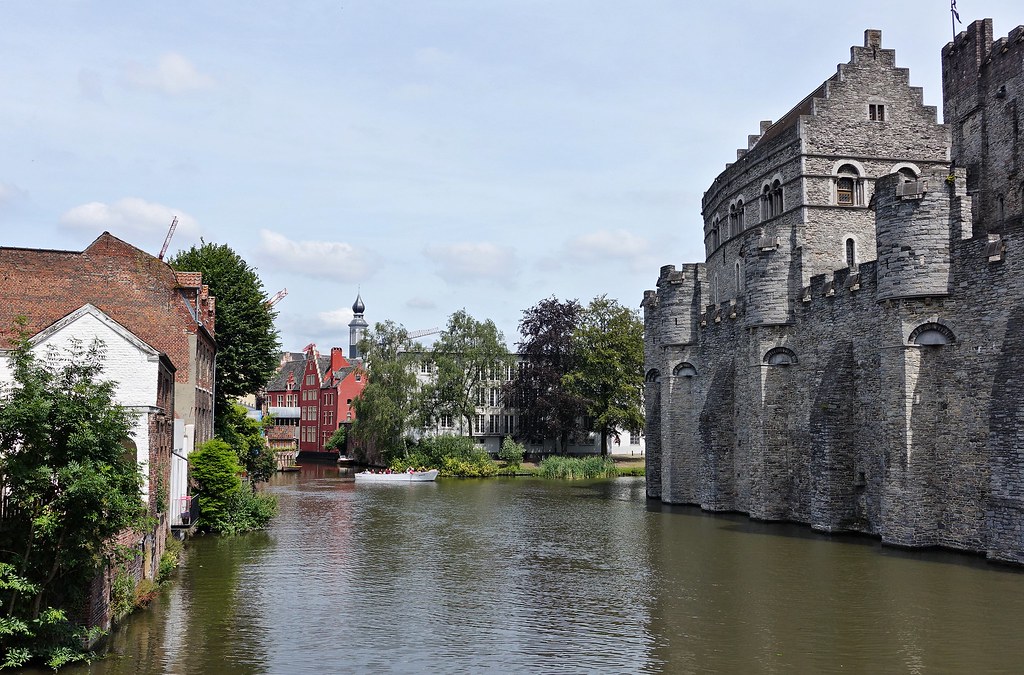
Of course I was eager to explore, but I stayed on the tram until it deposited me in front of the delightful and comfortable Logies Onderland.
Peeping into the office. Do you love the lace drape over the ceiling light?
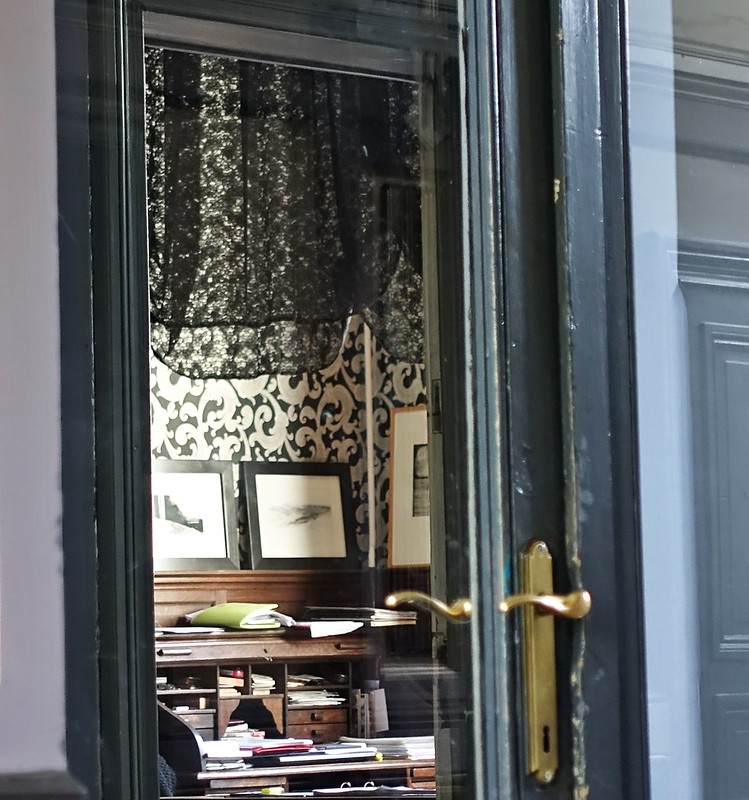
Looking down the center hall toward the garden, where my room was located ~
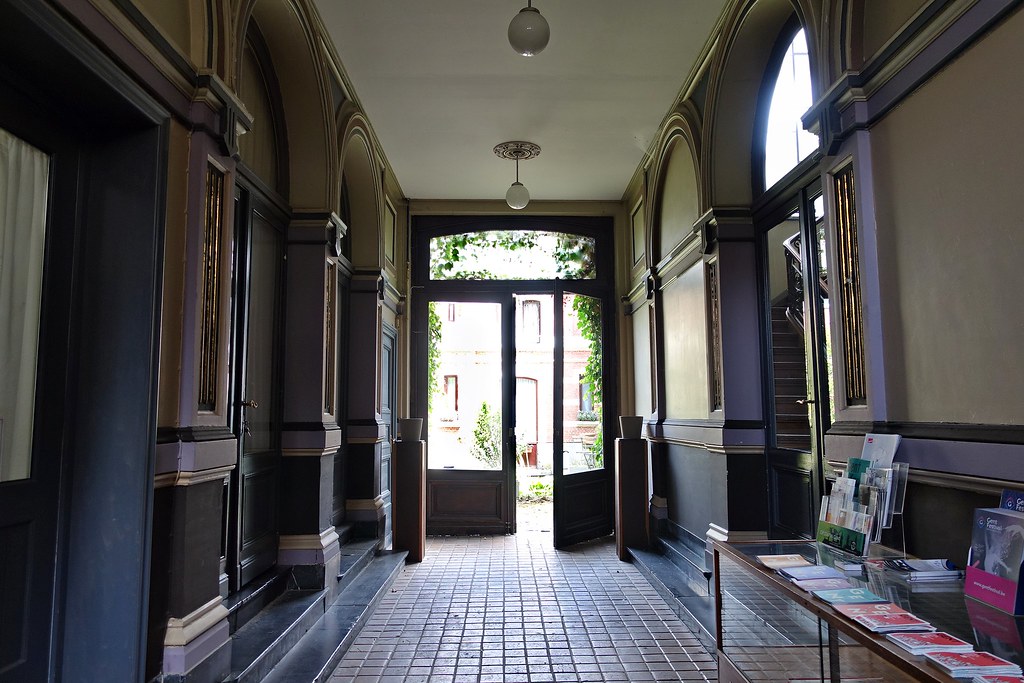
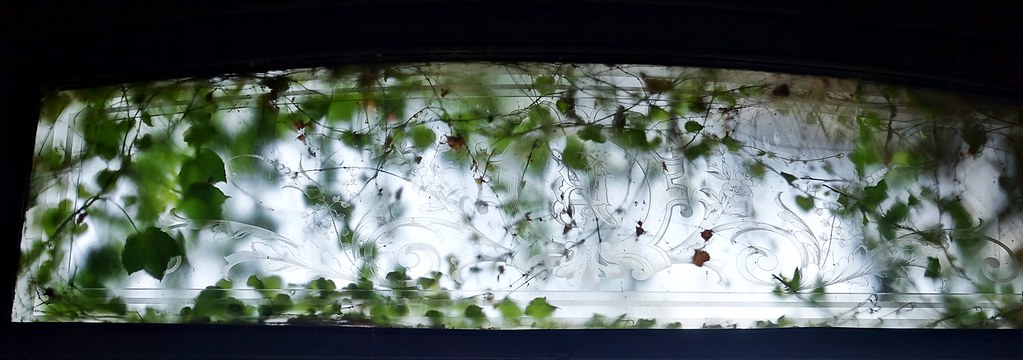
The door on the far left leads to the door to my room. The big glass door and the deck are part of my room!
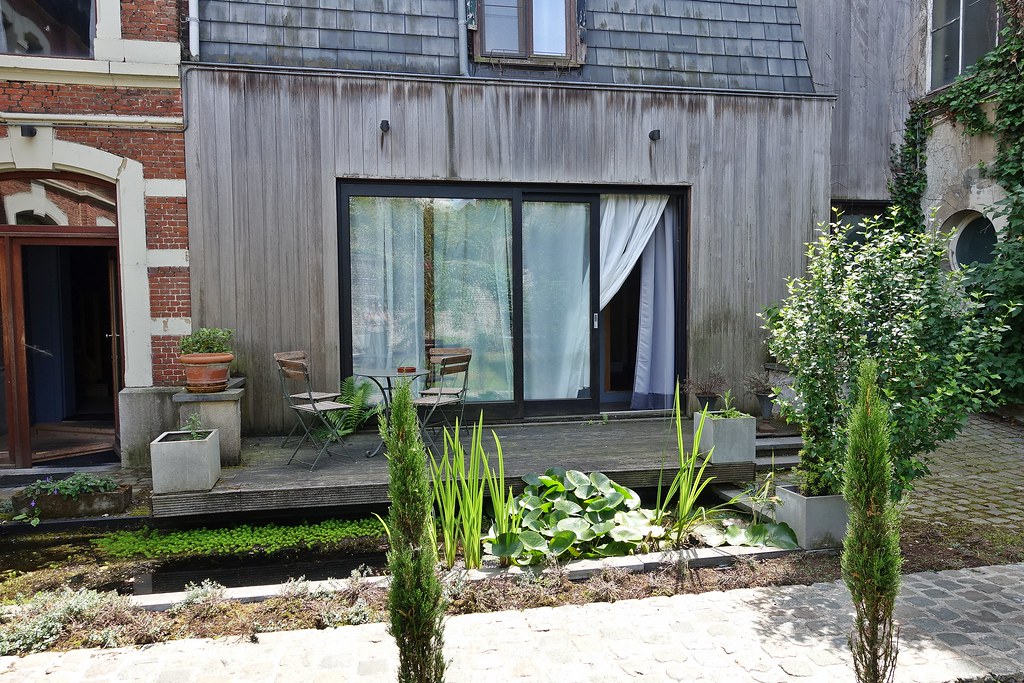
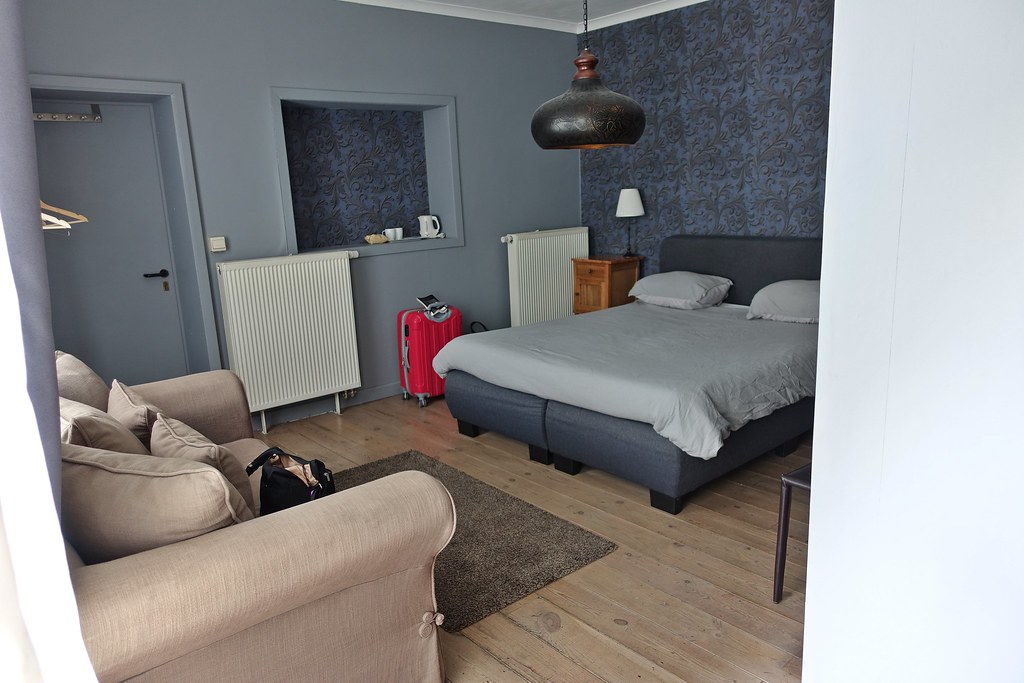
I am pleased ~
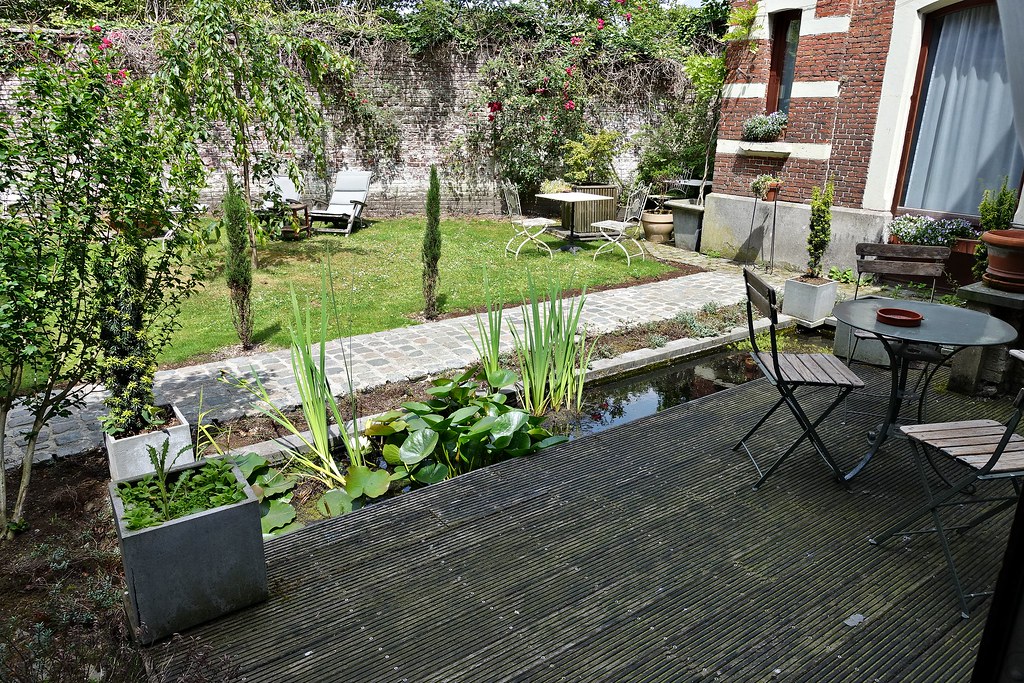
The garden had a quiet little resident with whom I made friends by giving her little snacks of the violas growing in the garden ~ 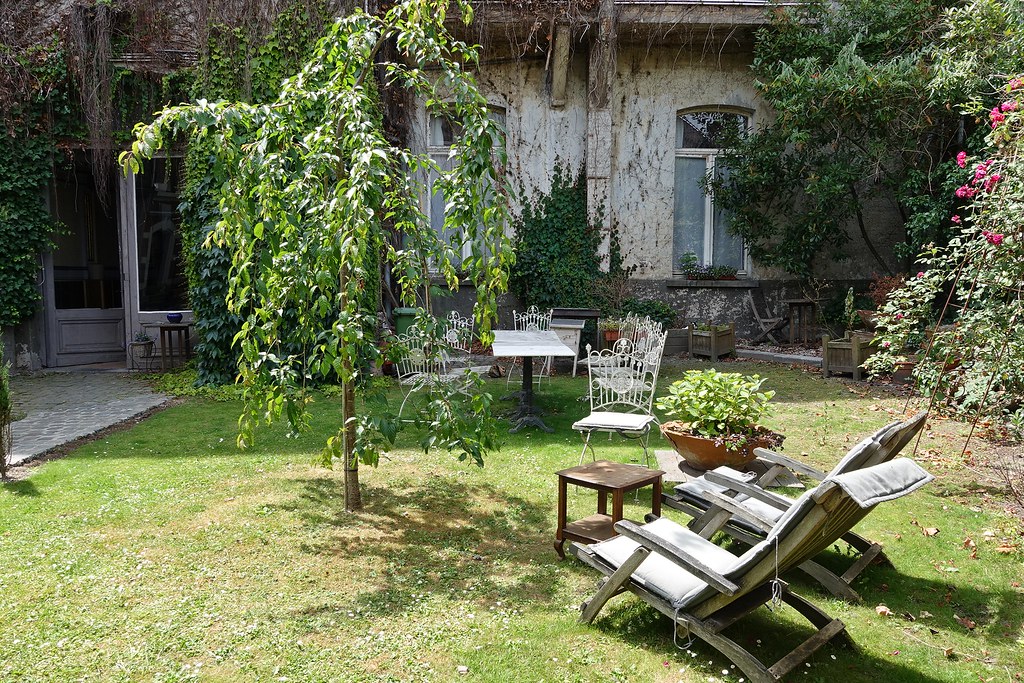 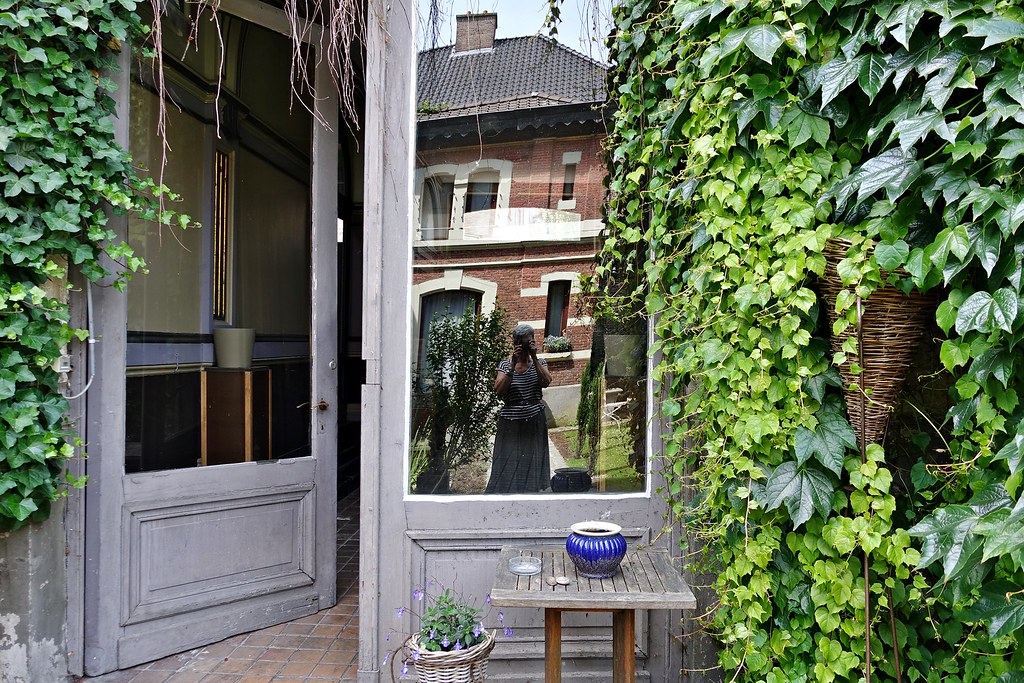  |
|
|
|
Post by questa on Jan 10, 2019 5:18:52 GMT
I like the way you started with a strong, rugged castle and finished with a little fluffy bunny. What a contrast! More, please.
|
|
|
|
Post by bixaorellana on Jan 10, 2019 5:34:04 GMT
It was at most a ten minute stroll from the darling b&b to the Patershol district, the oldest part of Ghent ~
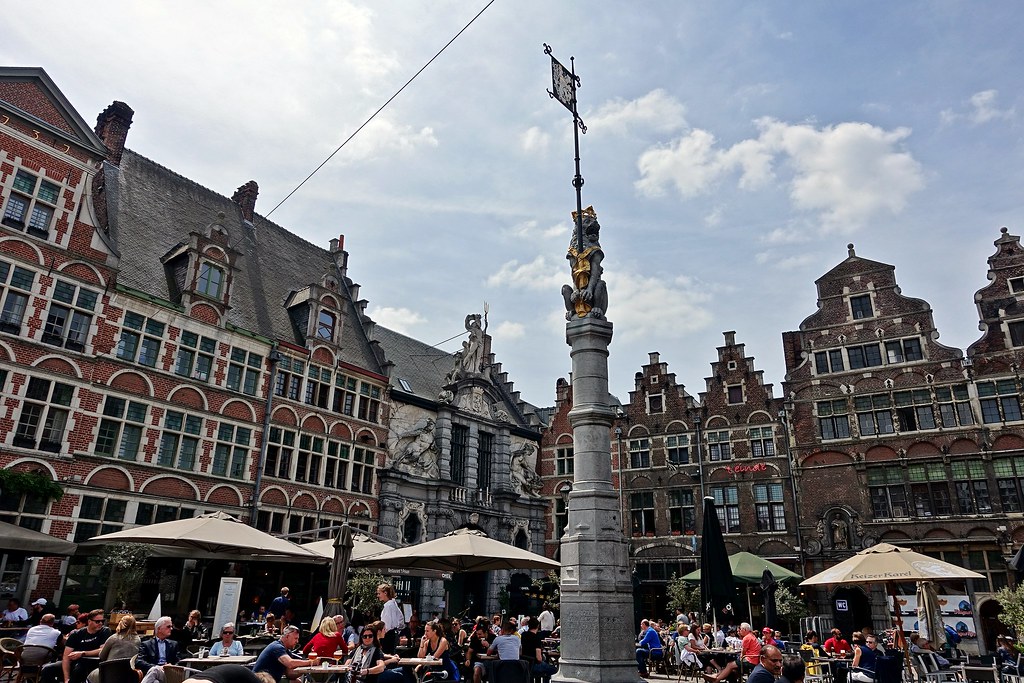
This is the entrance to the old fish market ~
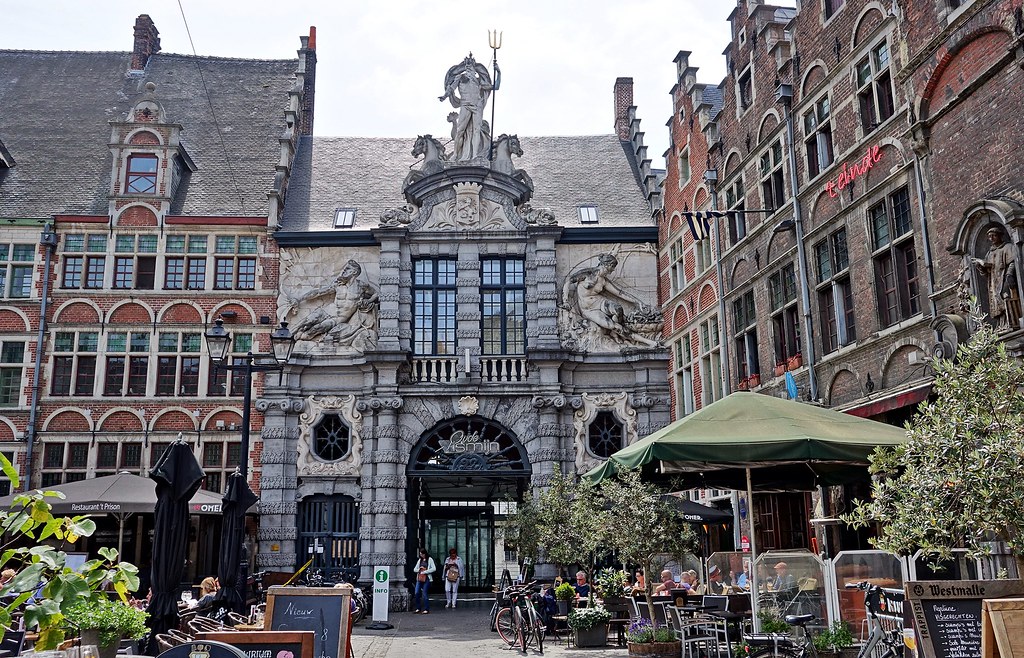
After all the travel forum chat I read re: "Bruges or Ghent?", I can only say look! Just look at Ghent! ❤️
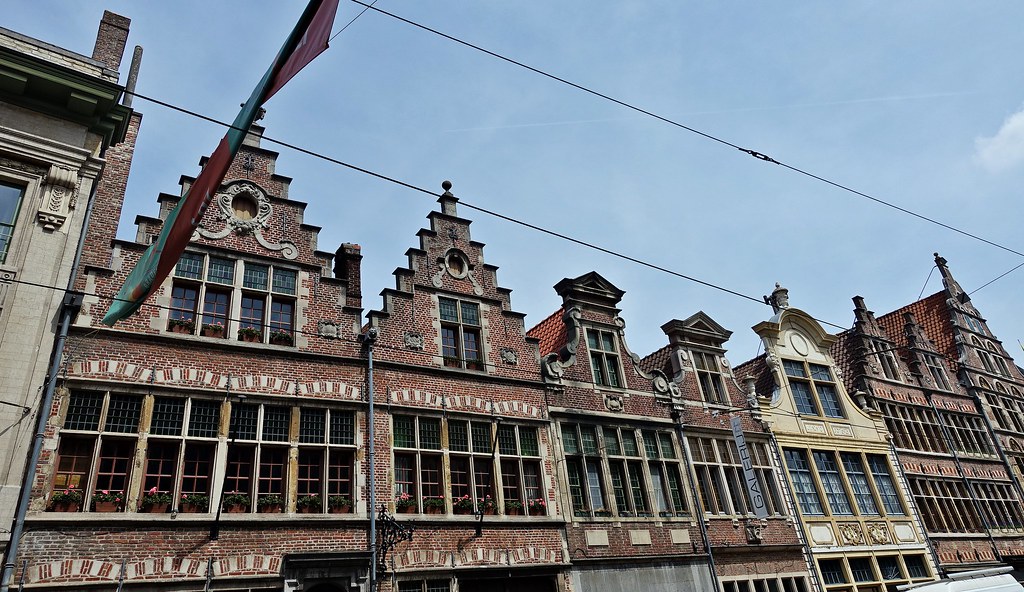
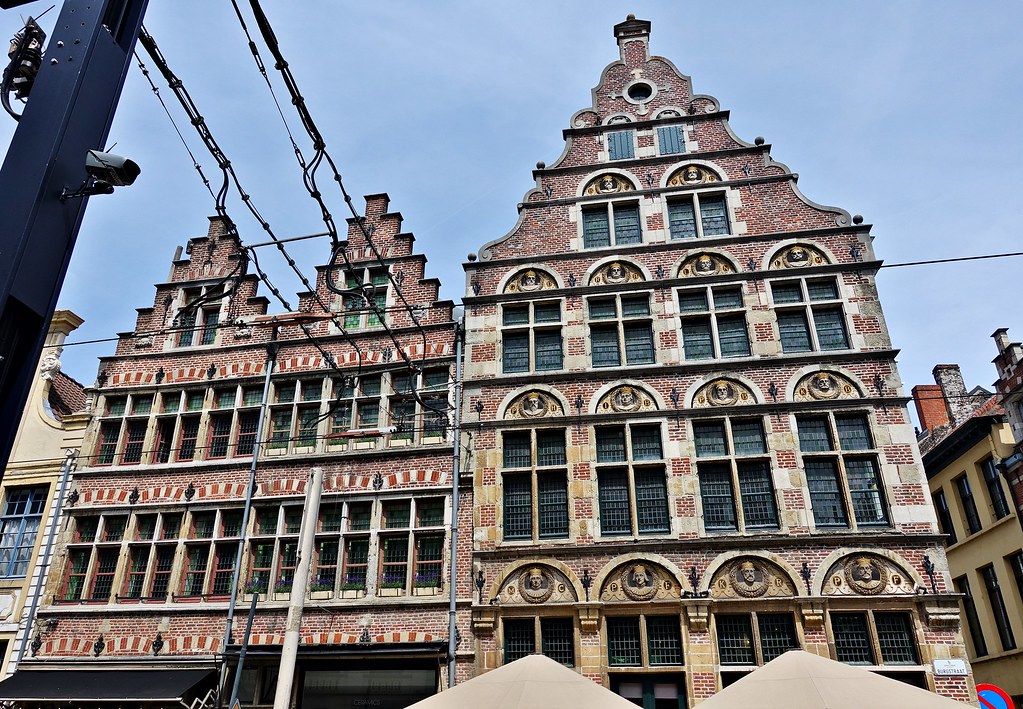
De Gekroonde Hoofden / The Crowned Heads -- the building dates from 1560.
The busts are of the Counts of Flanders from the 12th to the 16th century ~
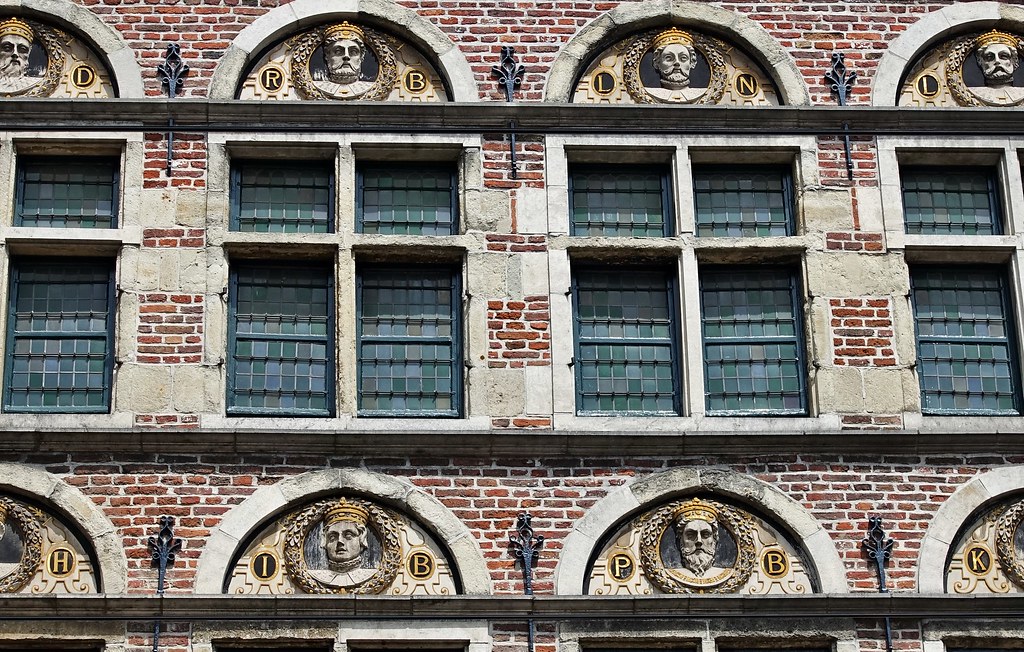
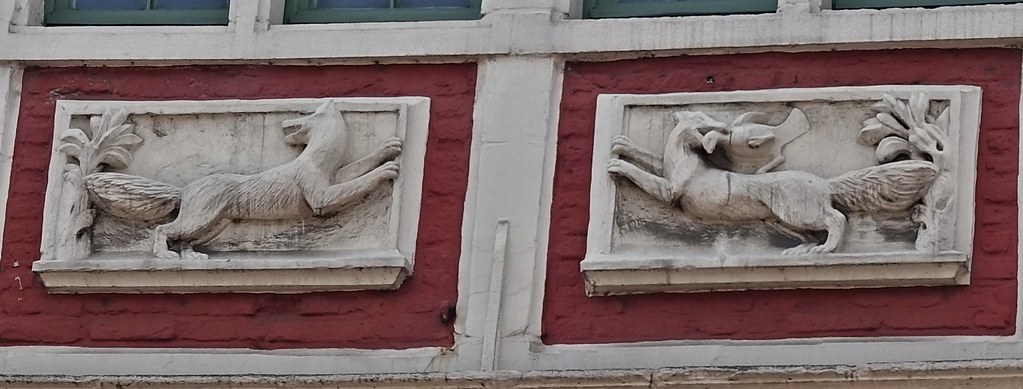
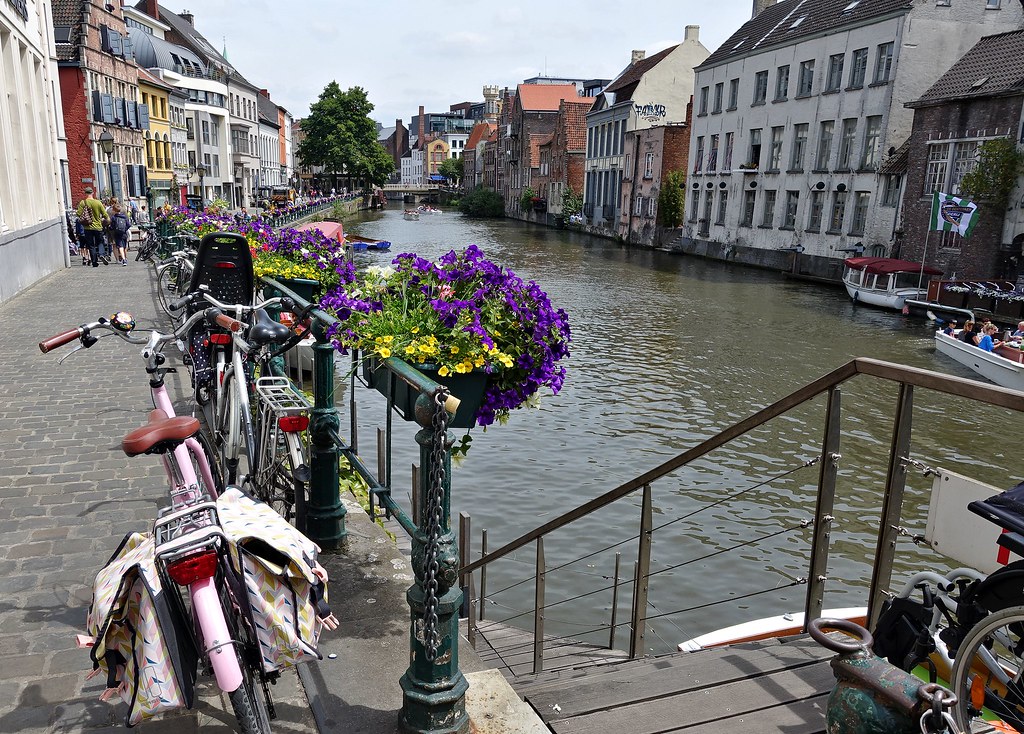
The old post office, built between 1898 and 1910.
It was designed by architect Louis Cloquet in collaboration with Stéphane Mortier for the 1913 World Exhibition. ~
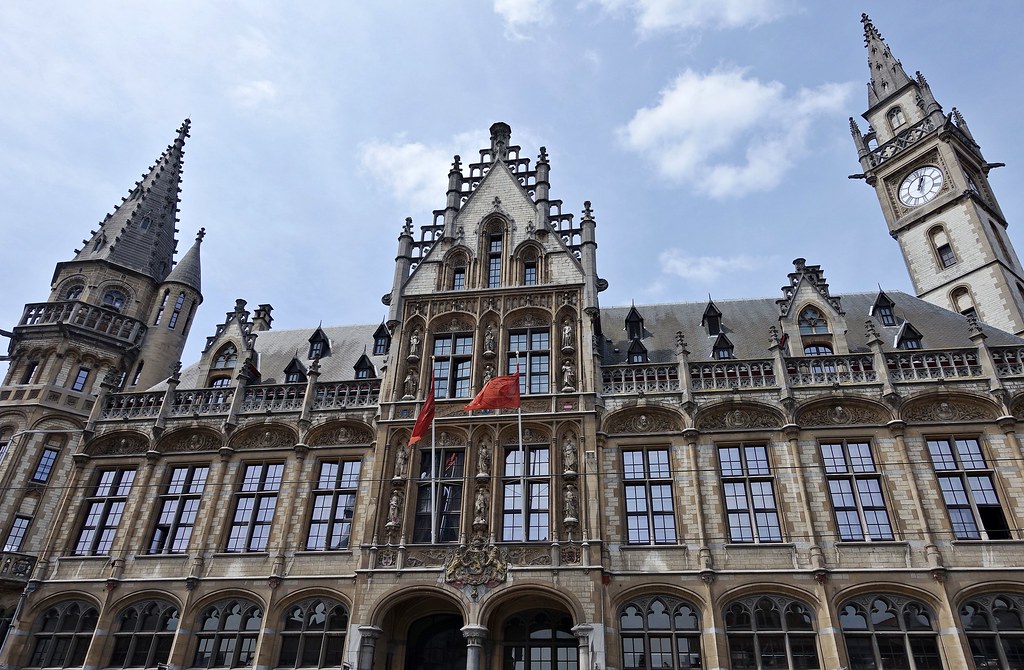
That is Saint Nicholas Church on the right. Stick around & I'll take you inside ~
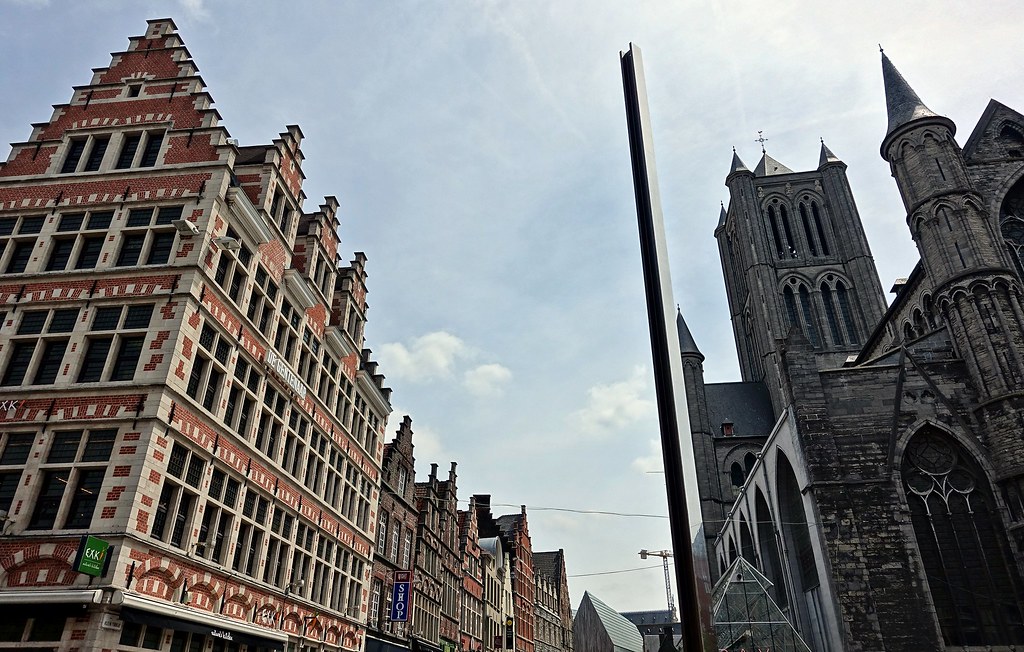 |
|
|
|
Post by bixaorellana on Jan 10, 2019 5:41:40 GMT
|
|
|
|
Post by kerouac2 on Jan 10, 2019 6:15:59 GMT
Beautiful but quite cruel to show us this in the middle of winter.
|
|
|
|
Post by bjd on Jan 10, 2019 6:29:57 GMT
I have so often seen people with knowledge of Belgium answer the "Bruges or Ghent" question on TT by saying Ghent. Now I see why. I looks lovely and you were so lucky with your accommodations.
|
|
|
|
Post by mickthecactus on Jan 10, 2019 8:52:35 GMT
What a lovely place!
Re the photographic exhibition my colleague Helen who worked with me before I retired had her head shaved a week ago to raise money for her friend who has a brain tumour. She had long blonde hair but now that it has gone she looks stunning. It really suits her.
|
|
|
|
Post by mossie on Jan 10, 2019 9:09:16 GMT
A wonderful travelogue. These Flemish towns show marvellously ornate architecture which you have made an excellent job of showing off.
|
|
|
|
Post by questa on Jan 10, 2019 9:54:22 GMT
Wonderful photos of a stunning town.I am pleased that they have seemingly banned awful advertising and development in the older sections.
RE the hair...in Iran where all women show only their face, they look more beautiful. When they are young they just glow. The older faces showed so much character and wisdom in their lines.
|
|
|
|
Post by lagatta on Jan 10, 2019 13:02:05 GMT
As some may remember, I have friends who have moved back to Ghent after living elsewhere upon their retirement. I'm looking forward to going there when I'm next in Amsterdam and am happy to see the b&b. I want to be somewhere I can either cook or buy (good) takeaway food such as vegetables from the market and a roast chicken, for example, and eat where I'm staying - I hate having to eat in restaurants all the time.
One positive for Ghent is that it isn't as overtouristed as Bruges, which is a small city and attracts crowds. I was there in the winter and just for a few hours, but it must be like a mini-Venice in summertime. Ghent is a university town, making it lively, but different from a place utterly centred on tourism. I think Ghent would be a fine place to study Dutch/Flemish.
Bunny is so sweet.
|
|
|
|
Post by lagatta on Jan 10, 2019 13:19:18 GMT
|
|
|
|
Post by kerouac2 on Jan 10, 2019 13:19:30 GMT
I am always curious to know which cities were destroyed in either of the big wars and then rebuilt later and which ones survived without damage. I am happy to have learned that Ghent survived WW1 without damage because it was occupied by the Germans almost immediately. That certainly wasn't fun, but at least they weren't living in rubble. stamgent.be/en/digi-expos/gent-bezette-stad |
|
|
|
Post by lagatta on Jan 10, 2019 13:29:22 GMT
That looks very interesting and I'll read the whole site a bit later. Occupying armies always confiscate food, fuel and other things and repress possible resistance movements, but I doubt it was as horrible as in the Second World War, especially for a people that is not at a great cultural or so-called racial remove. stamgent.be/nl_be/digi-expos/gent-bezette-stad Here it is in Dutch. It is also in French, but I want to read the text over in Dutch for a bit of study. |
|
|
|
Post by fumobici on Jan 10, 2019 15:00:52 GMT
Everyone I know who has been to Ghent has come back fairly gushing about it. From the beginning of this report, I can see why. What more are you holding back from us?
|
|
|
|
Post by bixaorellana on Jan 10, 2019 16:22:21 GMT
Wow, you guys ~ thanks! I really appreciate the comments and the background you all have supplied. Just to answer Fumobici's question: I have a bunch more to show, but even so, there is so much more to Ghent than I managed to see. The old parts of town are stunning, but it's a large vibrant city with a fascinating history and tons of culture. Even without going to the café- and landmark-packed parts of the old city, there were things to see near my b&b.
This canal view was taken from the bridge in front of the Rabot, an ancient sluice gate fortified into a fortress at the end of the 15th century ~
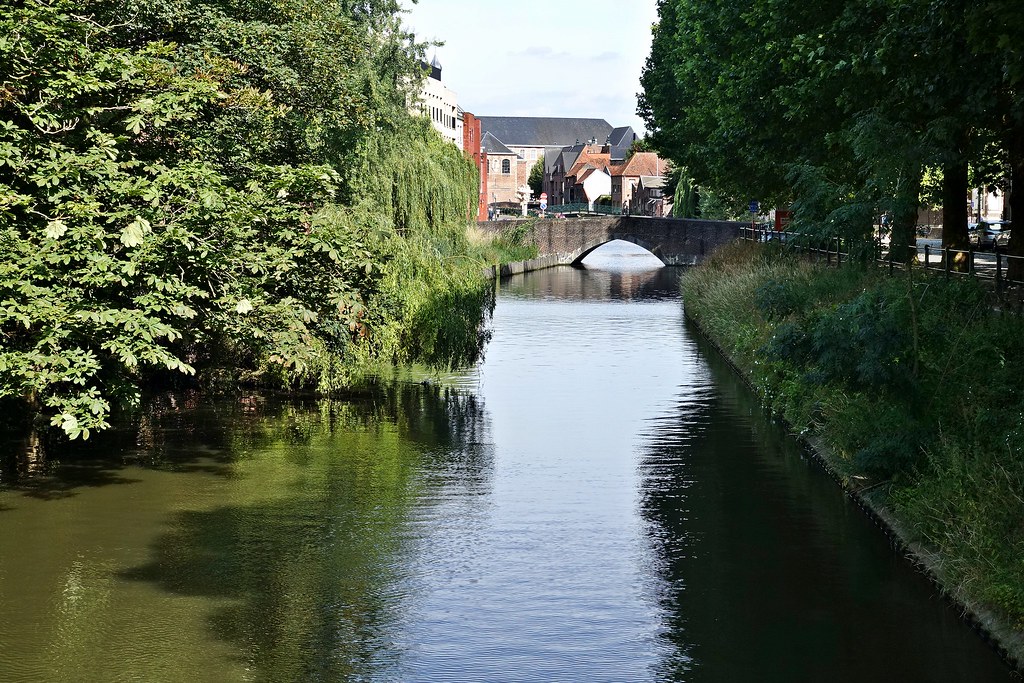
Perhaps this could be the venue for the next Anyport get-together ~
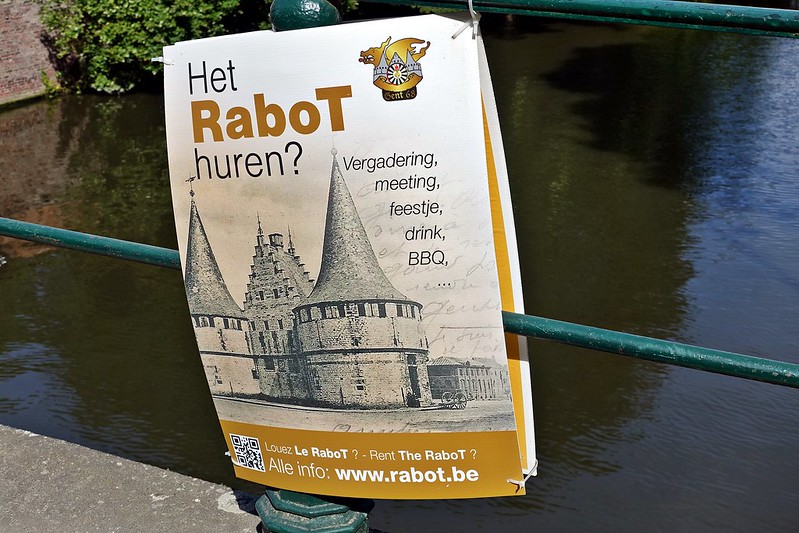
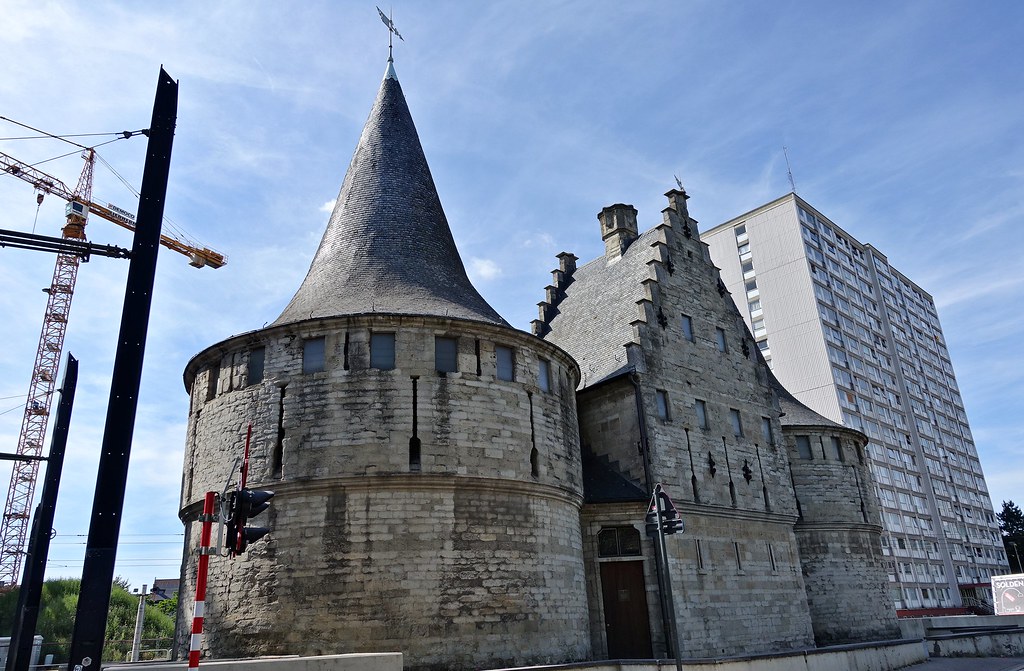
Returning past the b&b and moving toward town, I come across this striking statue commemorating the 1539 Revolt of Ghent.
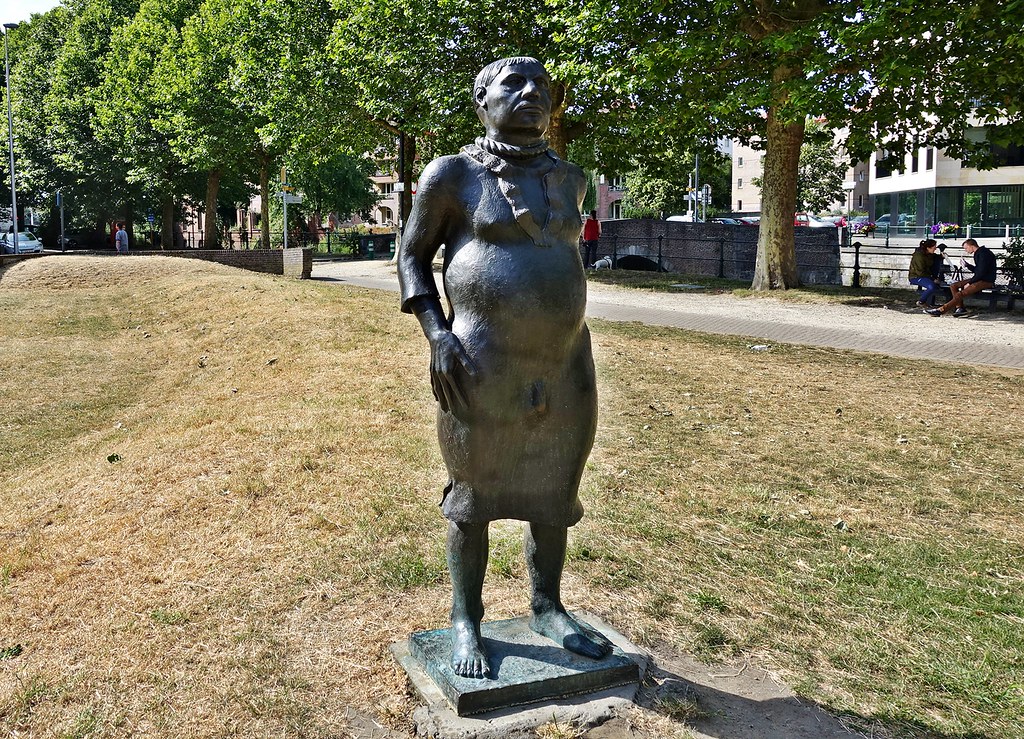
The citizens rose against Charles V, the Holy Roman Emperor, in protest of high taxes.
Part of Charles' retaliation was the humiliation of the rebel leaders.
They were paraded in undershirts with nooses around their necks. This proud rebel faces the Donkere Poort / Dark Gate of the Prinsenhof ~
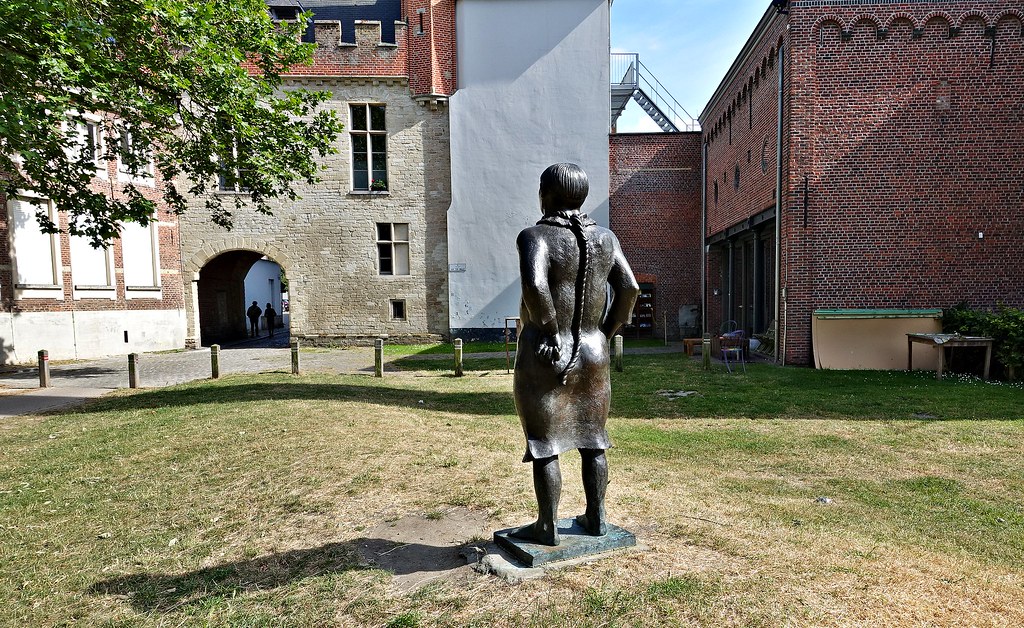
The building to the right of his elbow is the Caermersklooster Provincial Cultural Center, a former friary church.
It was purchased by the city of Ghent in 1881. How lovely to see a Little Library here ~
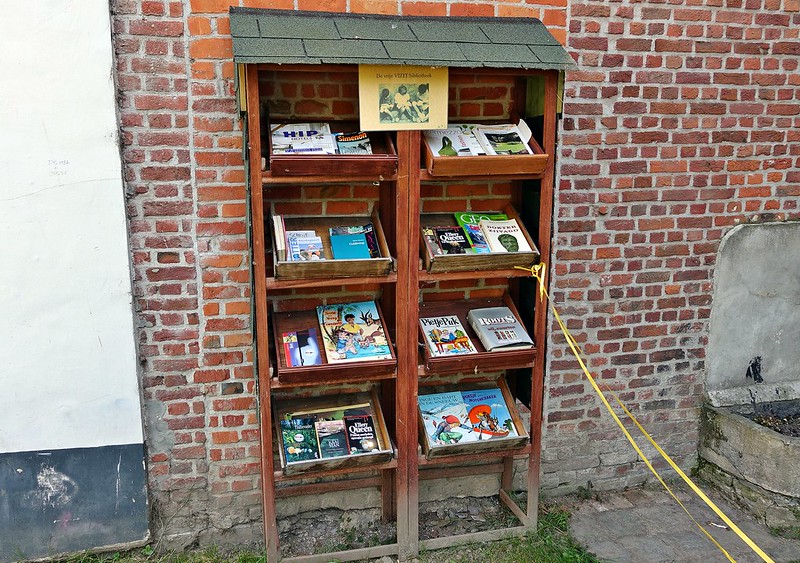
Wandering through the Dark Gate, I come upon the parking lot surrounded by residences for people and birds ~
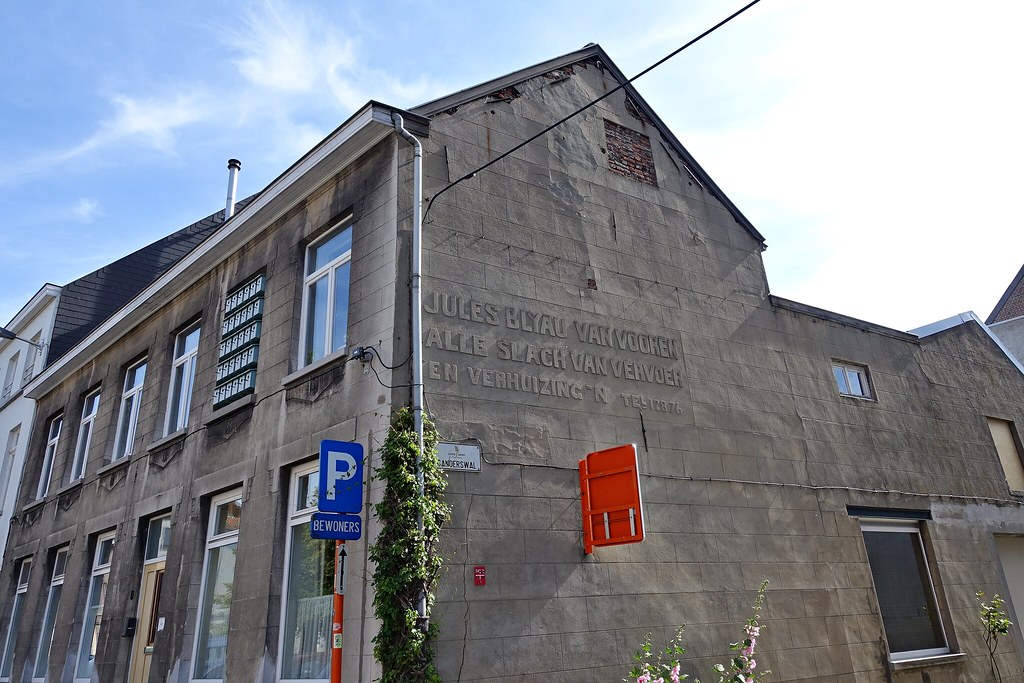
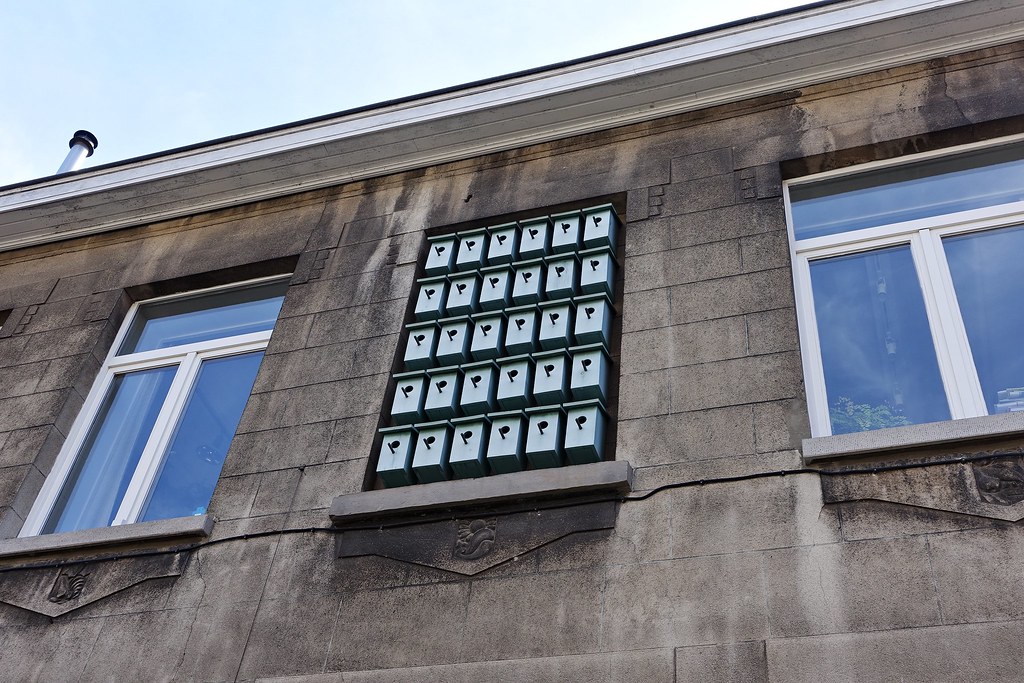
Back out on my well-trodden path to town, I pass under this nun ~
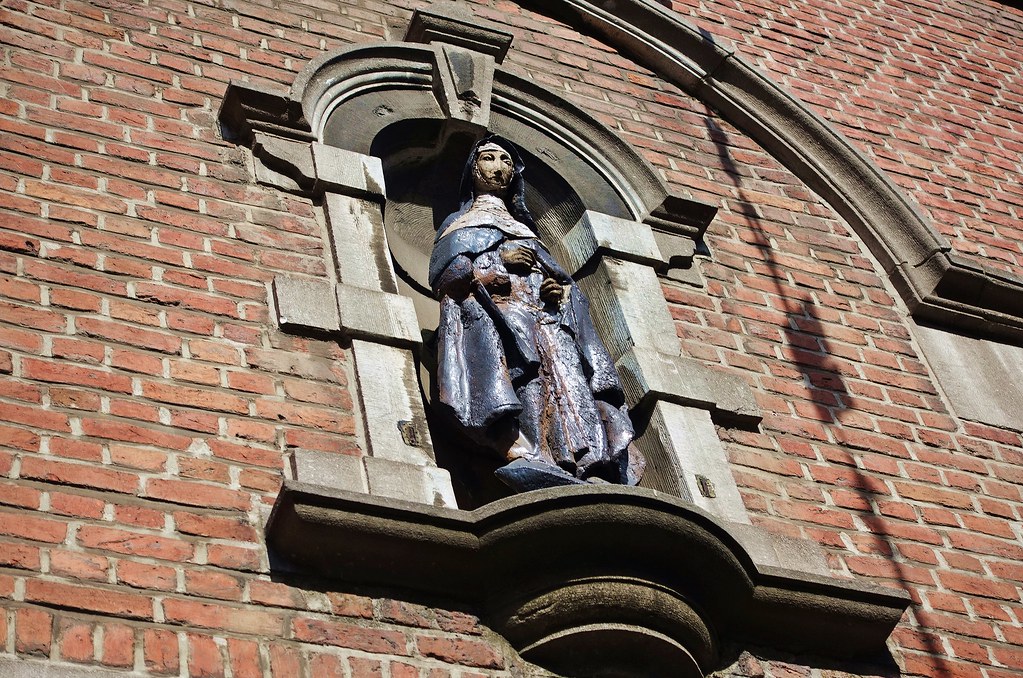
She presides over this home for the religious order of Colettine nuns founded by St. Coleta ~
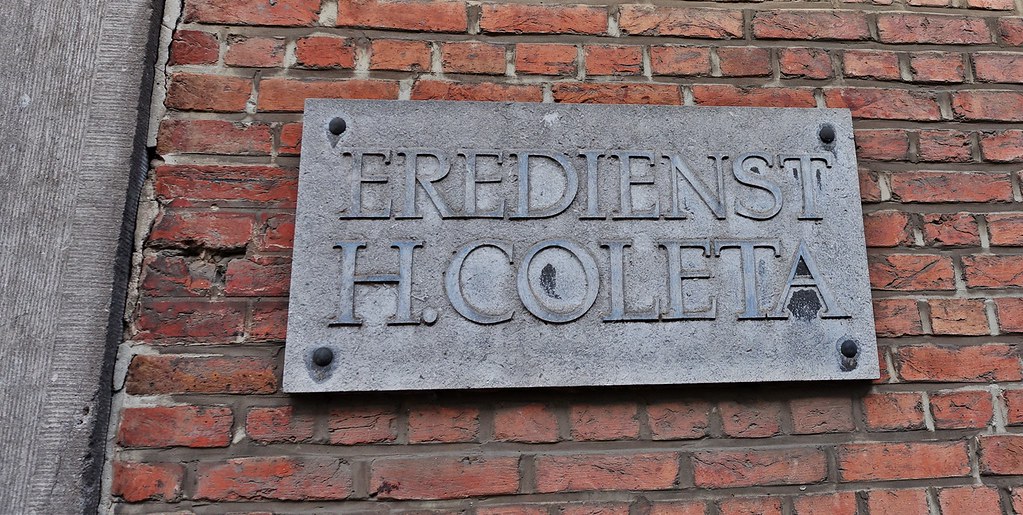
Ghent was big on sidewalk notices. I assume this one suggests you not allow your dog to do this ~
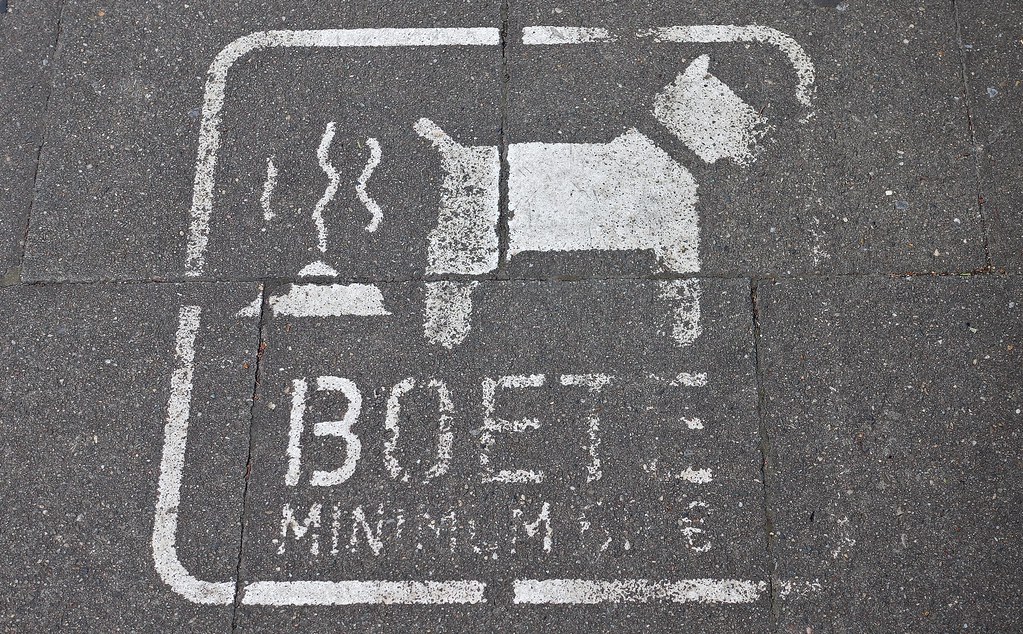 |
|
|
|
Post by kerouac2 on Jan 10, 2019 17:04:05 GMT
I have just learned that undershirts from back then had pee holes in them.
|
|
|
|
Post by bixaorellana on Jan 10, 2019 18:24:29 GMT
|
|
|
|
Post by mossie on Jan 10, 2019 19:10:12 GMT
Has your nun on the wall got three hands? or is it my eyes
|
|
|
|
Post by bixaorellana on Jan 10, 2019 23:11:53 GMT
Mossie, it's no small thing to get a convent built, you know. She raised the money by dealing three-card monte.
|
|
|
|
Post by lagatta on Jan 10, 2019 23:37:24 GMT
I guess church hall bingo was not enough... Historically, those nuns have been pretty damned resourceful.
A neighbour - down the street, not a next-door neighbour - gave me four super-solid oak chairs that were from the Motherhouse of Congrégation Notre-Dame, a powerful player in the city. She was moving to Ottawa to be near her son's family. I'd asked her if the chairs were for sale, and she said "Just take them - please!" So I did. They were so heavy that I could only carry one at a time. She was also getting rid of a very cute IKEA bistro-style set, which two young female roommates took, but my chairs will certainly outlive me, as they have outlived more than a few of the sisters.
|
|
|
|
Post by questa on Jan 10, 2019 23:37:28 GMT
Droll, very droll ! (to Bixa)
Part of me is loving these pics and part of me is screaming, "Keep the bloody tourists away or you will lose it to the crowds and McDonalds!"
|
|
|
|
Post by bixaorellana on Jan 11, 2019 1:27:34 GMT
I don't think tourists are unaware of Ghent, Questa. It's hard for me to know, since the weather was so nice that any place with outdoor tables had a healthy number of clients. There's also a big university population, as you'll see later in the pictures. Whenever I visited a landmark there, I was far from the only tourist. It's far from fakey-touristy, though. I loved it! More pictures from the old center. Anyone who knows Ghent is welcome to jump in and correct any mis-identification.
I found the City Pavilion to have a friendly feel and quite like its modern style ~
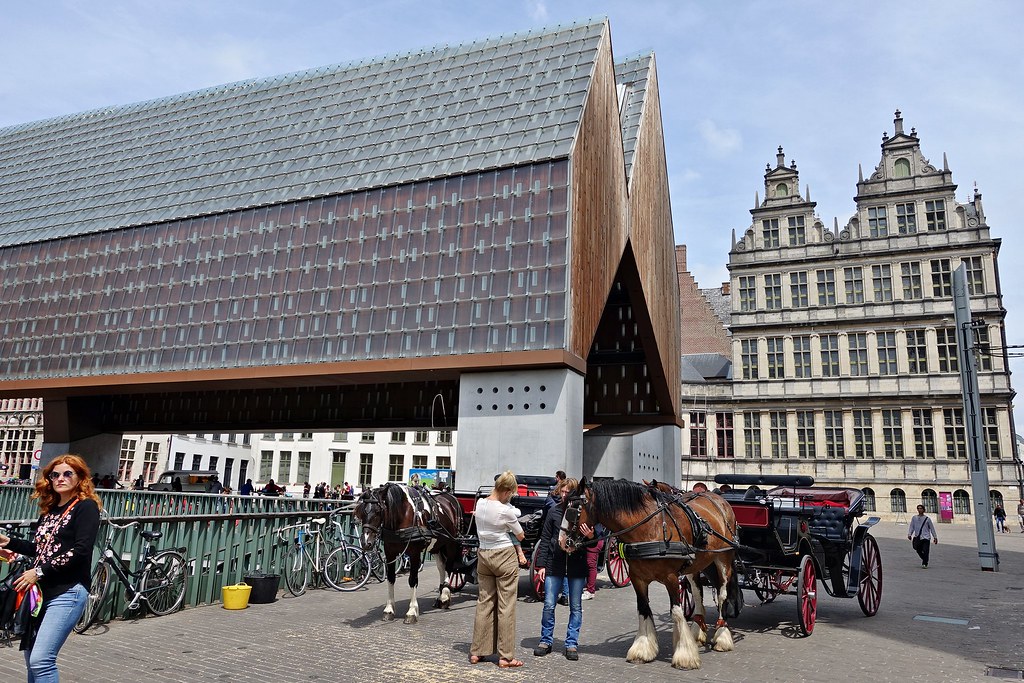
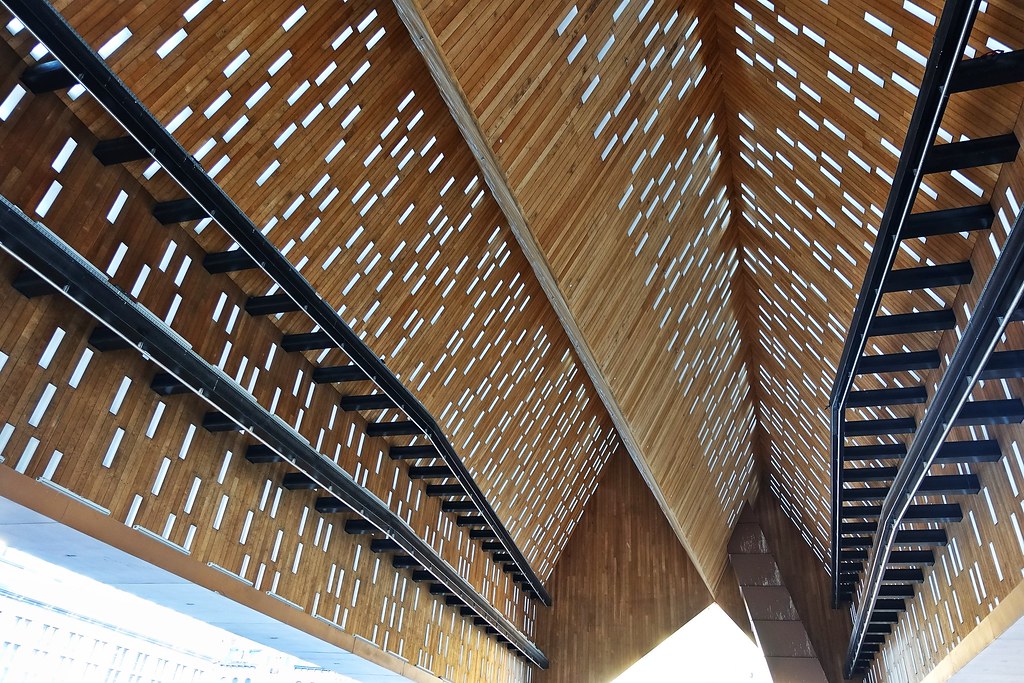
The Ghent Town Hall is made up of two completely different styles.
The first part is from the early 16th century & the later edition from the late 16th & early 17th centuries.
Yes, these three next pictures are all one building ~
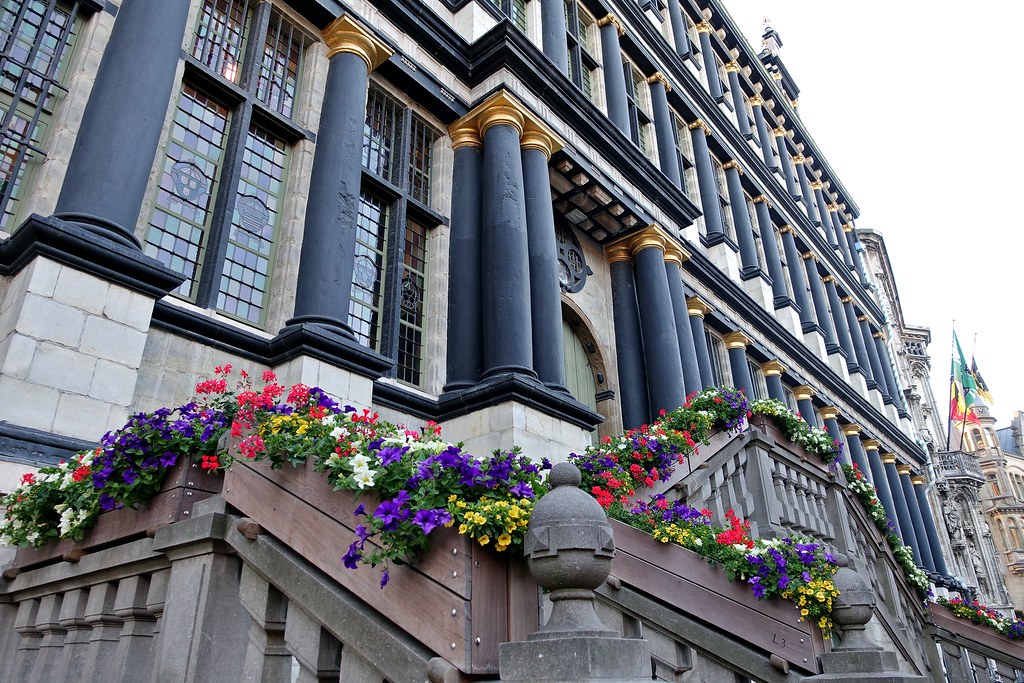
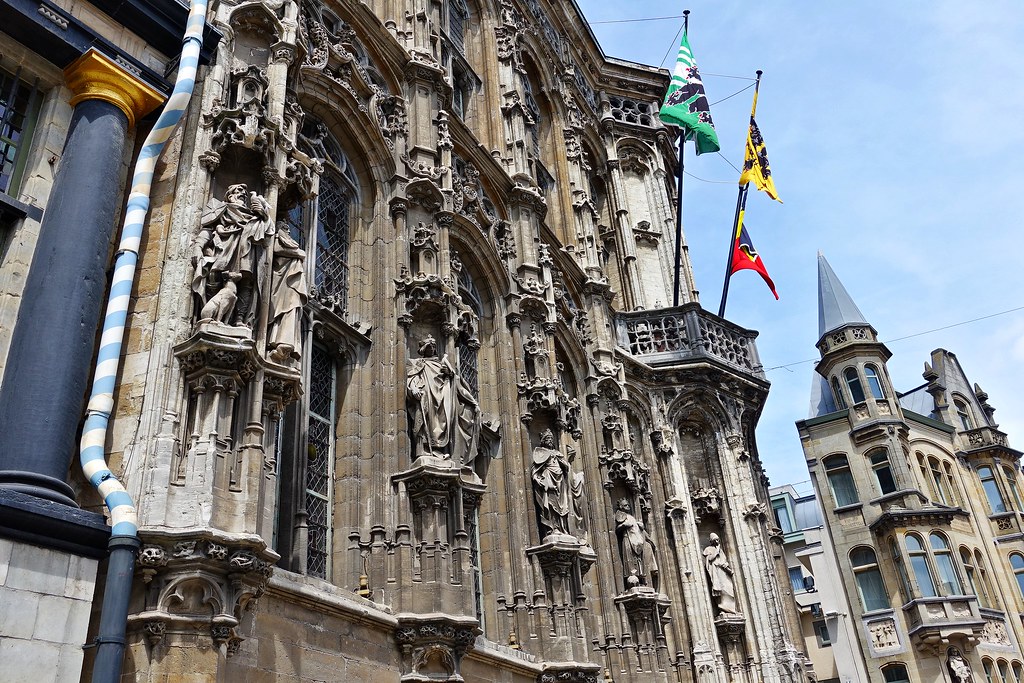
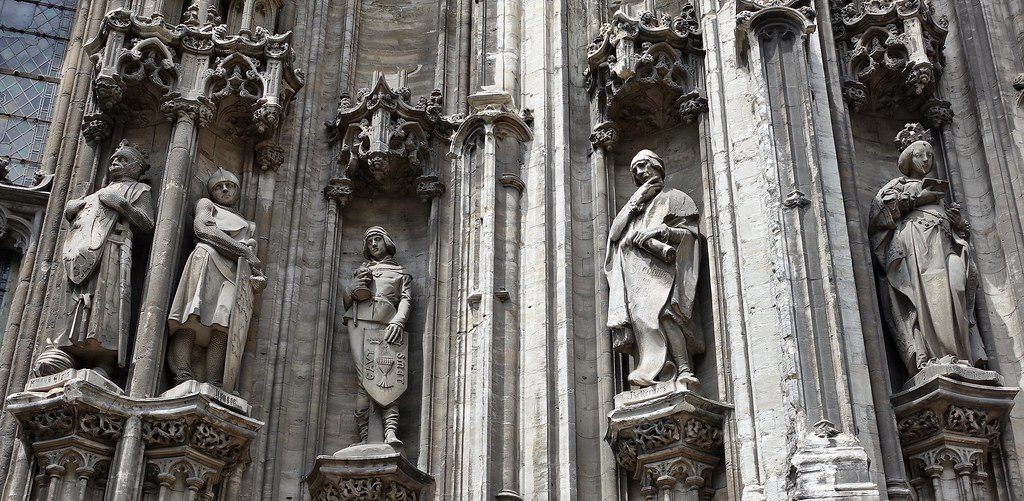
Graslei is a quay in the historic city center of Ghent, Belgium, located on the right bank of the Leie river.
The quay opposite of the Graslei is called Korenlei.
Both quays were part of the medieval port and are now a cultural and touristic hotspot of the city. source
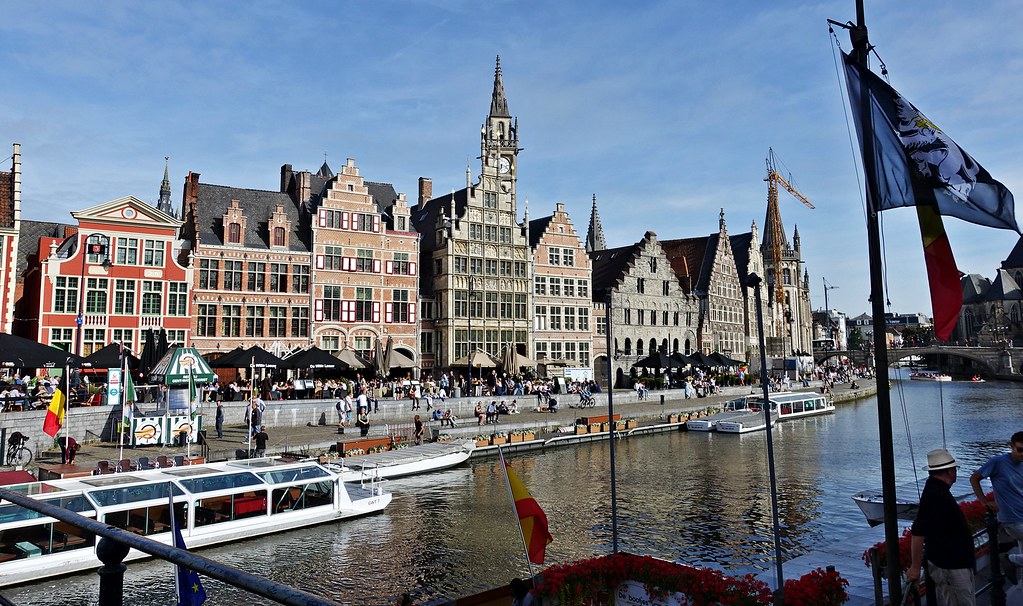
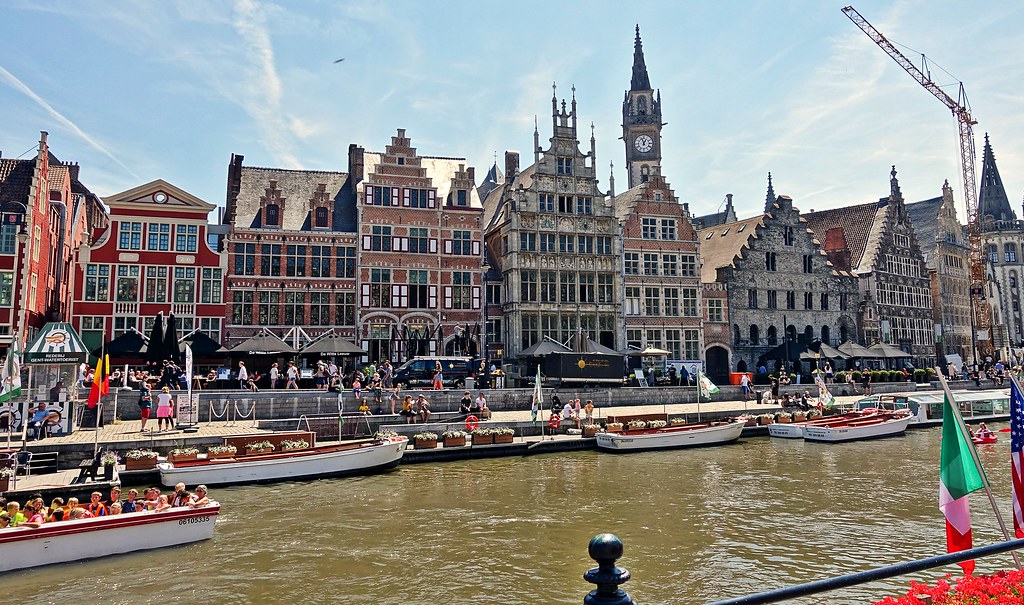
Vrijdagmarkt square and its Toreken "little tower', the 15th century home of the Tanners Guild.
Today it houses the Poëziecentrum, with a focus on Dutch-language poetry, translations of Dutch poems and Afrikaans poetry.
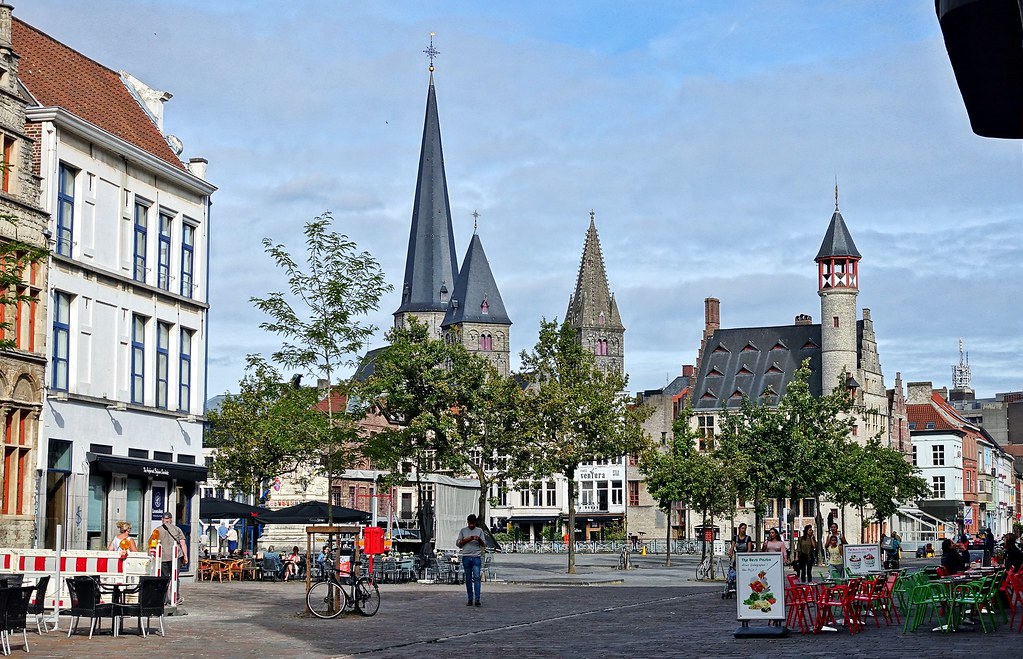
The Dulle Griet, "Mad Meg", after the Flemish folklore figure Dull Gret, is a medieval supergun founded in Mons. more
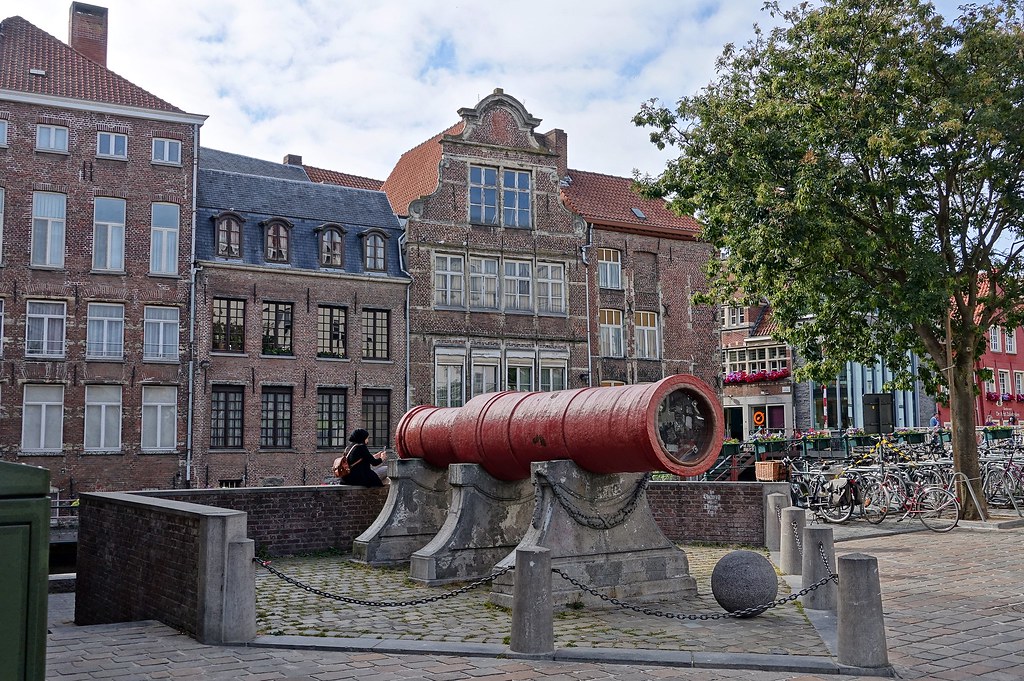
And yet another landmark on Vrijdagmarkt Square is the statue of Jacob van Artevelde ~
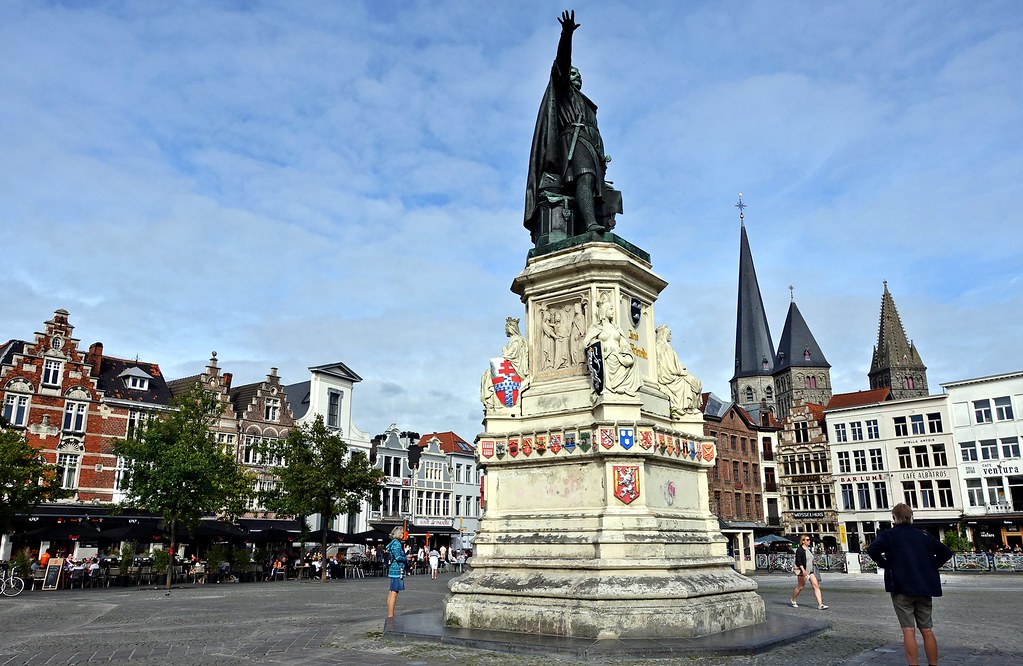
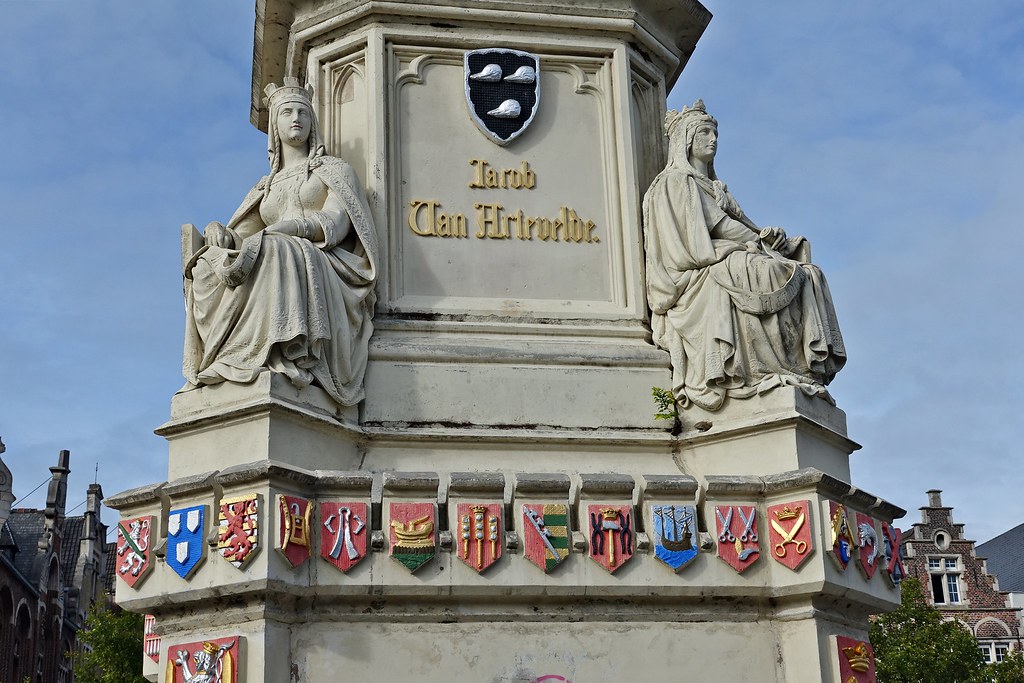
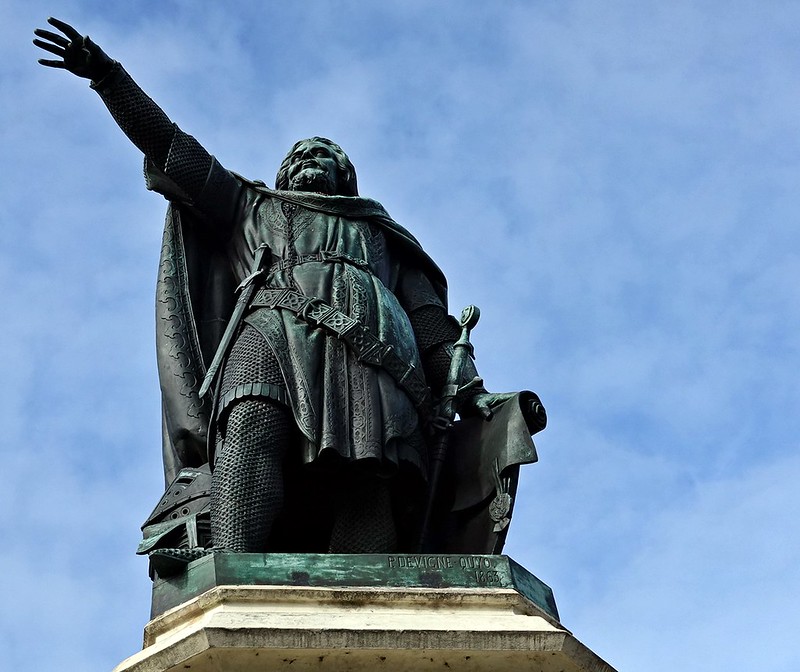 |
|
|
|
Post by mich64 on Jan 11, 2019 2:21:49 GMT
What a delight to scroll through this report tonight!
I enjoy it when you come upon thought provoking exhibits in amongst the already incredible museums, or on the promenades or, such as this one, in an incredible church where you can appreciate the beauty and subject matter of the presenter.
Your room is made perfect with that lovely patio door and lanai, what an oasis at the end of a day exploring beautiful Ghent!
I loved the collection of birdhouses, practical yet artistic.
|
|
|
|
Post by bixaorellana on Jan 11, 2019 21:32:36 GMT
|
|
|
|
Post by bixaorellana on Jan 11, 2019 21:38:59 GMT
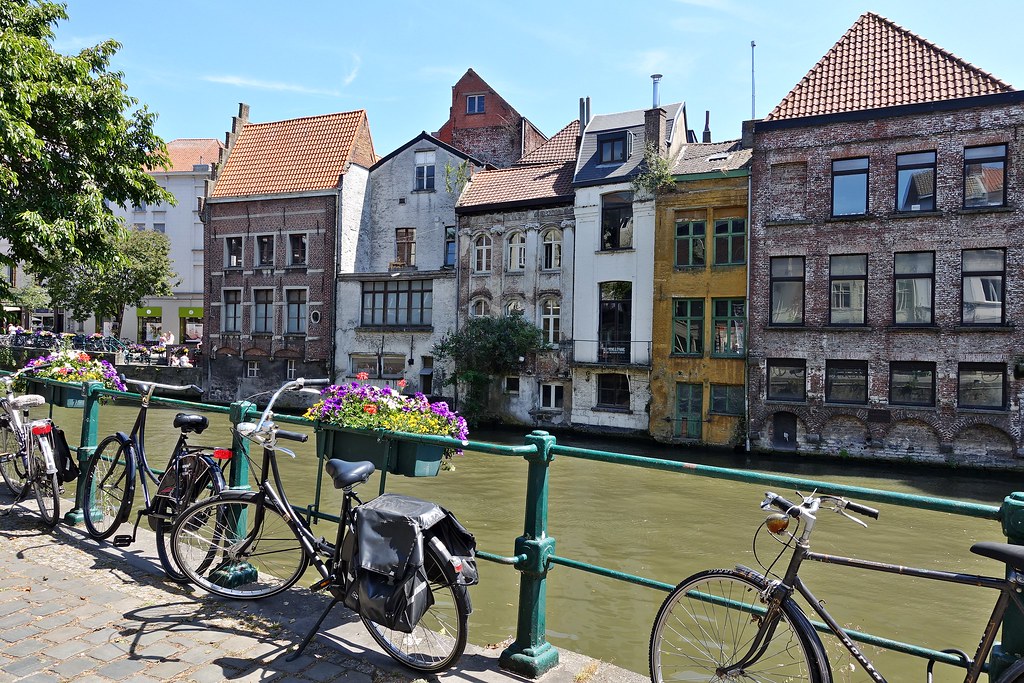
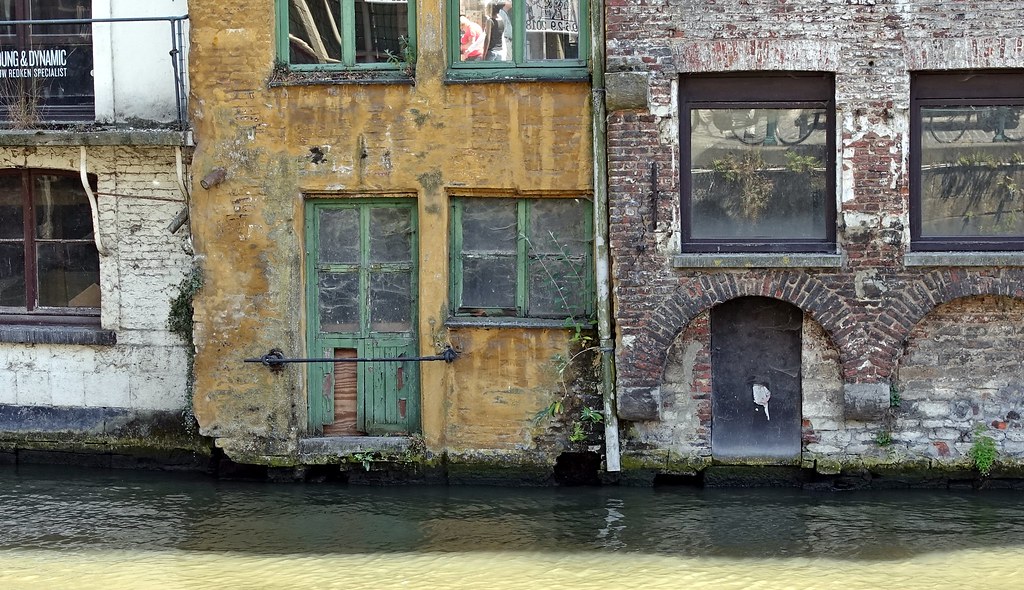
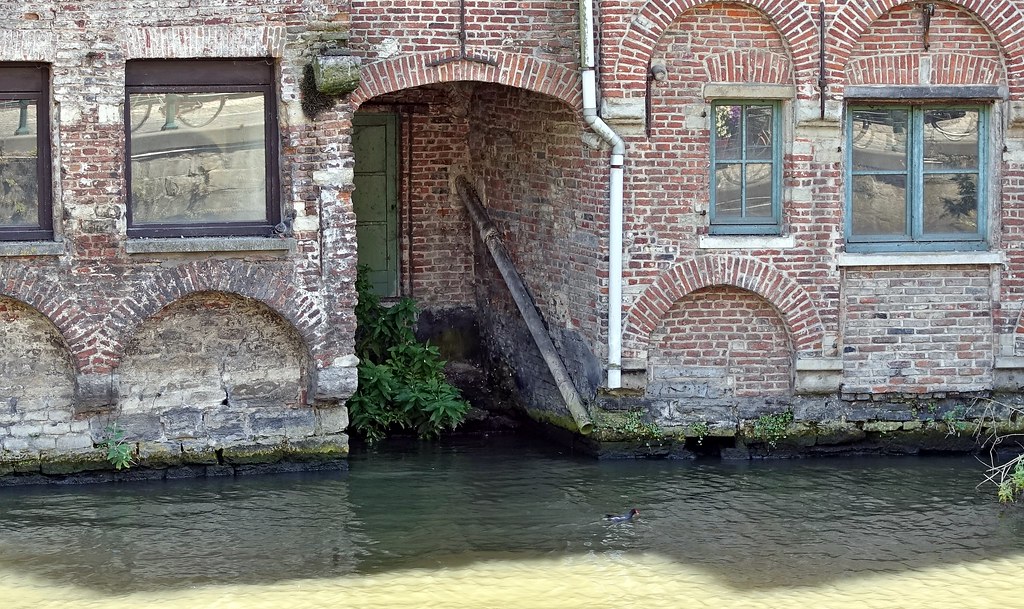
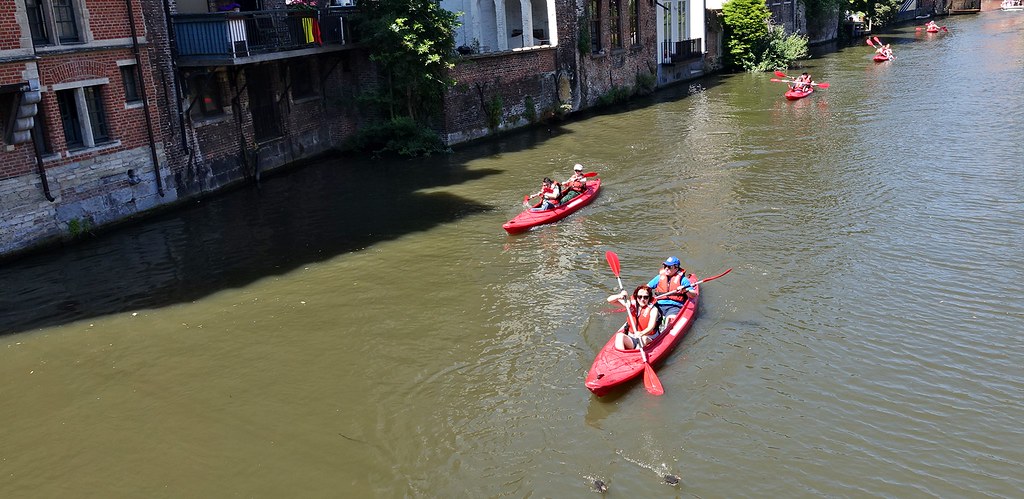
For all its medieval charm, Ghent has a lively and modern spirit, plus some great shopping ~
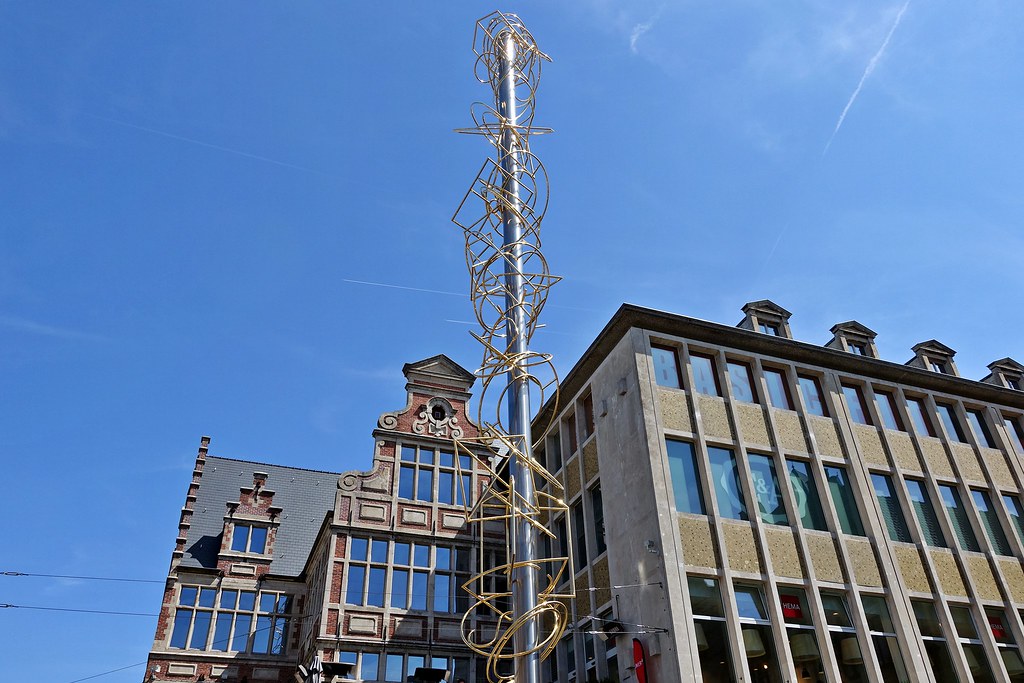
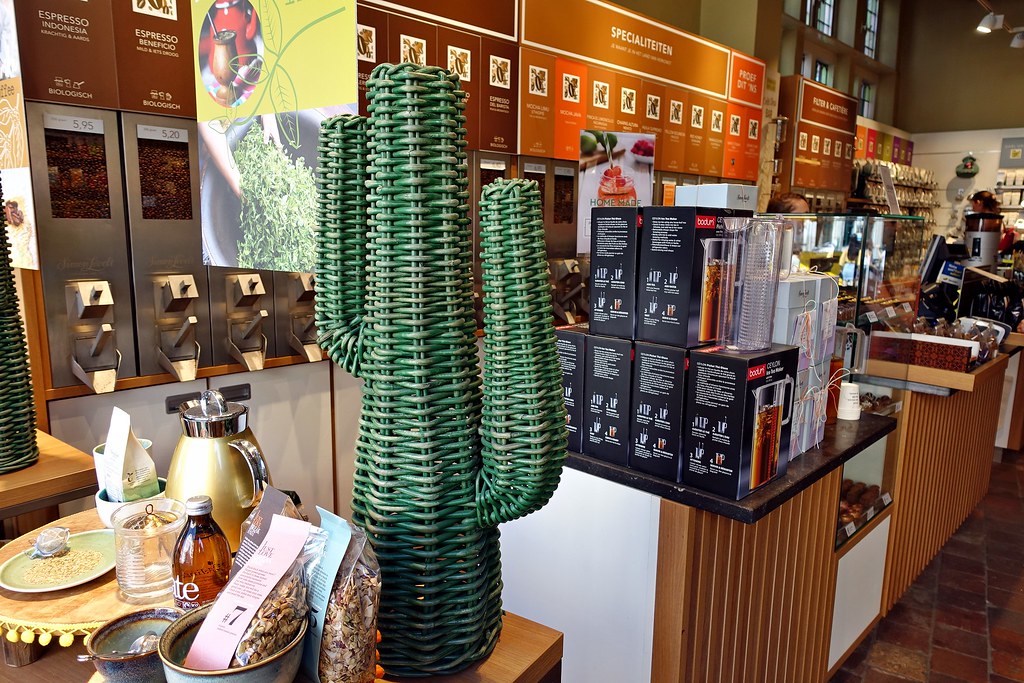
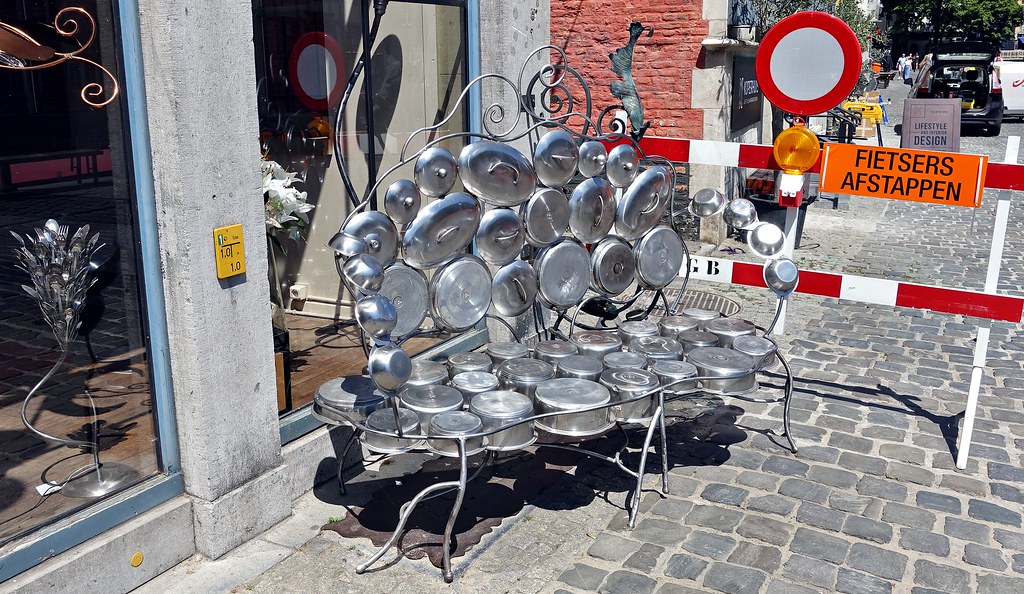
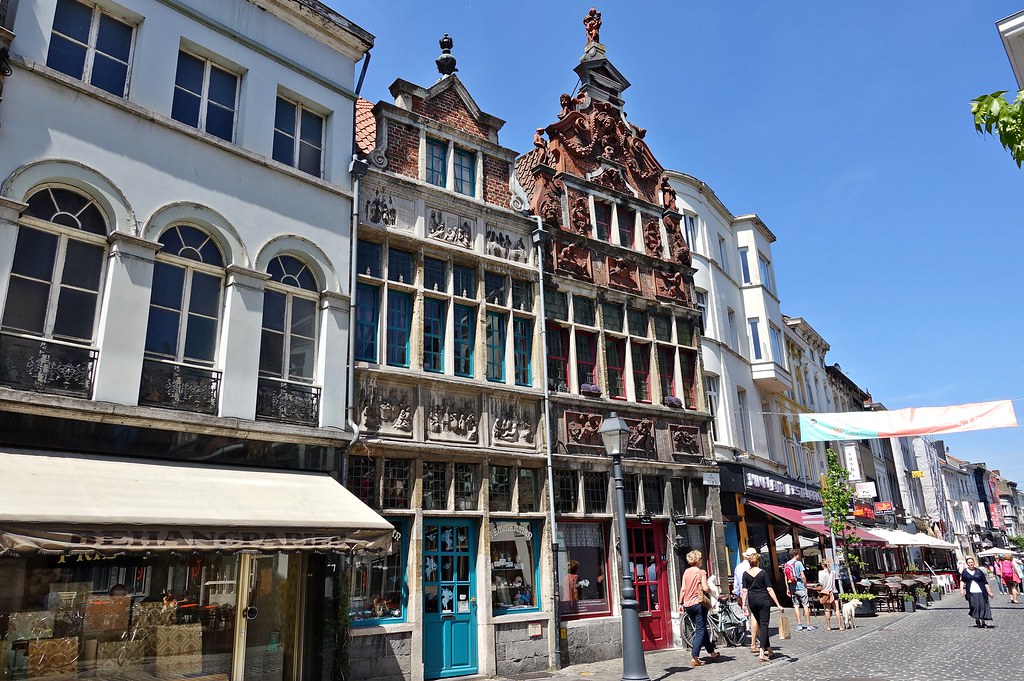
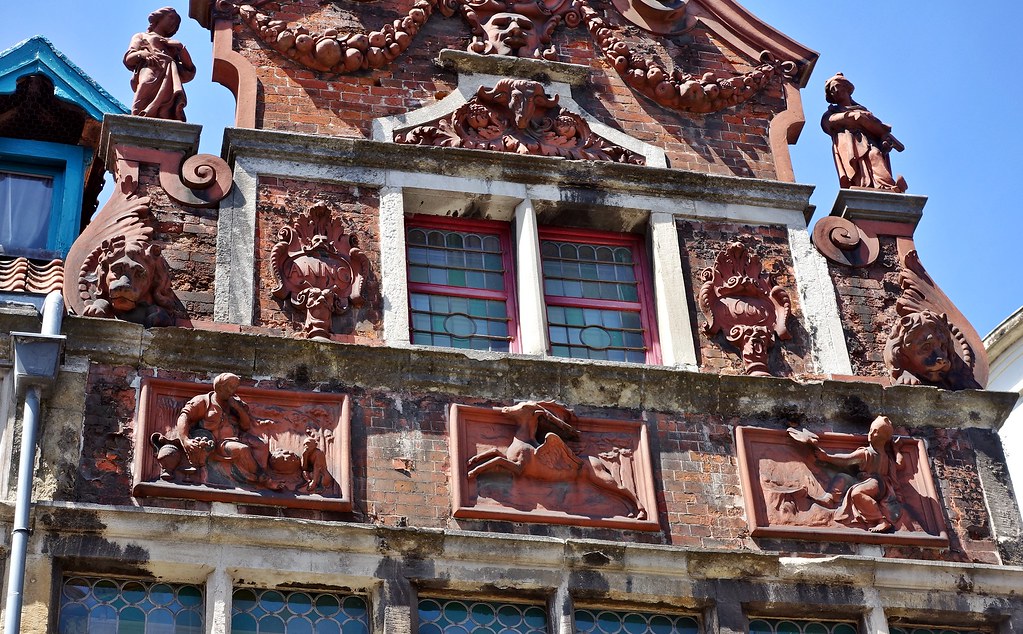
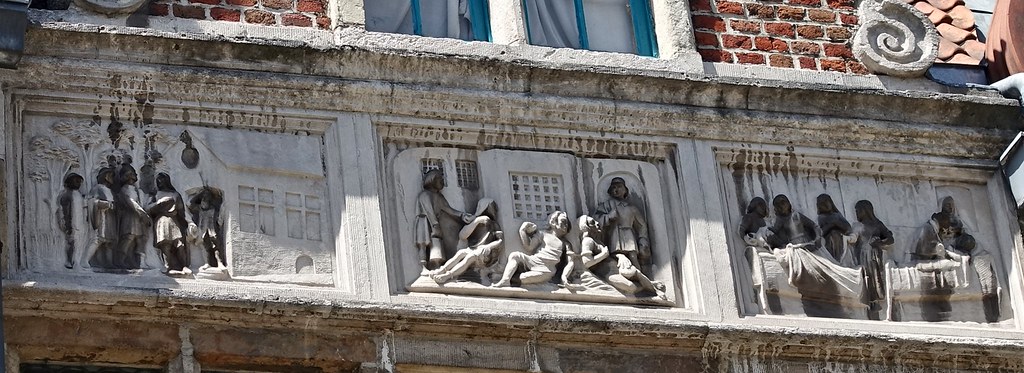 |
|
|
|
Post by bixaorellana on Jan 12, 2019 5:18:26 GMT
A prime reason for my visiting Ghent was to see The Adoration of the Lamb equally known as The Ghent Altarpiece.
Viewers are allowed a close look at it inside a special room in St. Bavo's Cathedral. See link above for the altarpiece and special information for 2020.
Photos of the altarpiece are not allowed, but the rest of the cathedral has an overwhelming number of treasures.
[/div]
|
|
|
|
Post by bixaorellana on Jan 12, 2019 5:27:26 GMT
The cathedral has some unexpected items ~
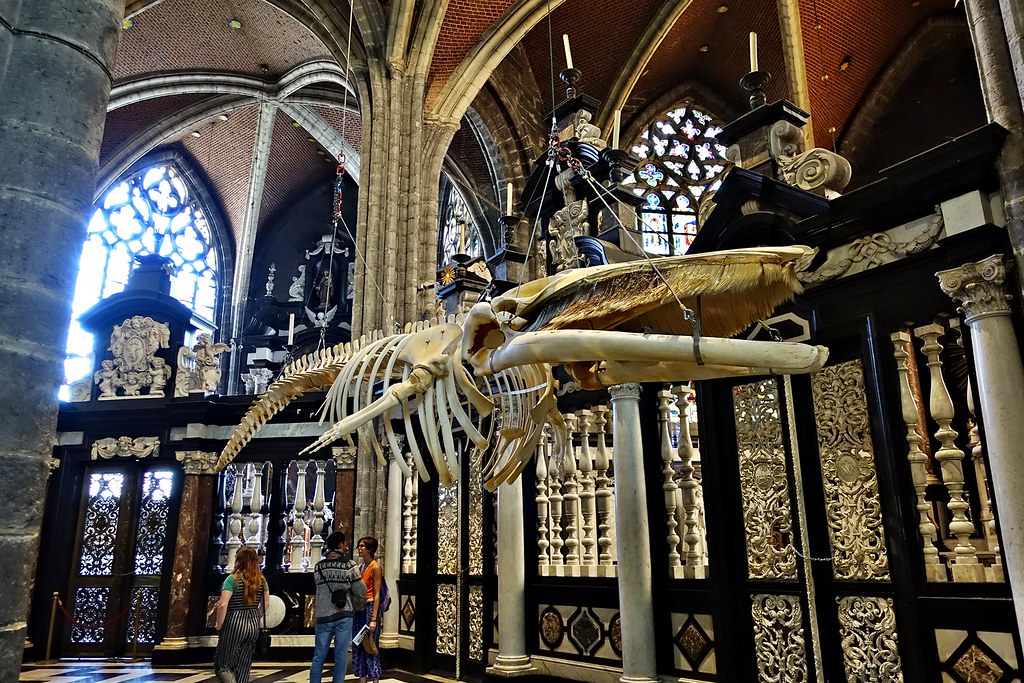
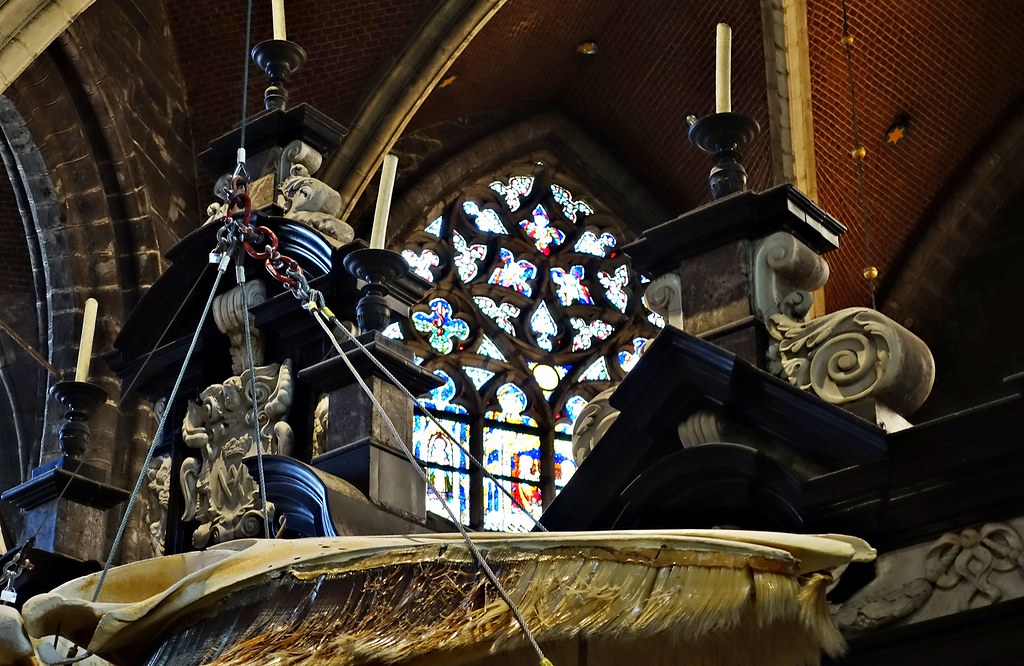
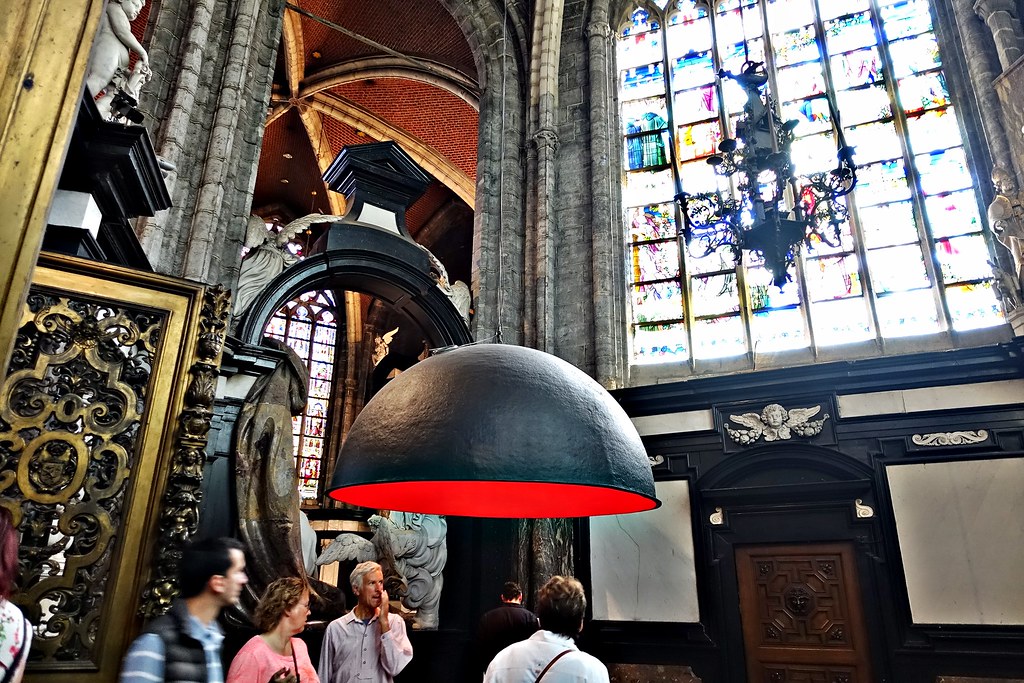
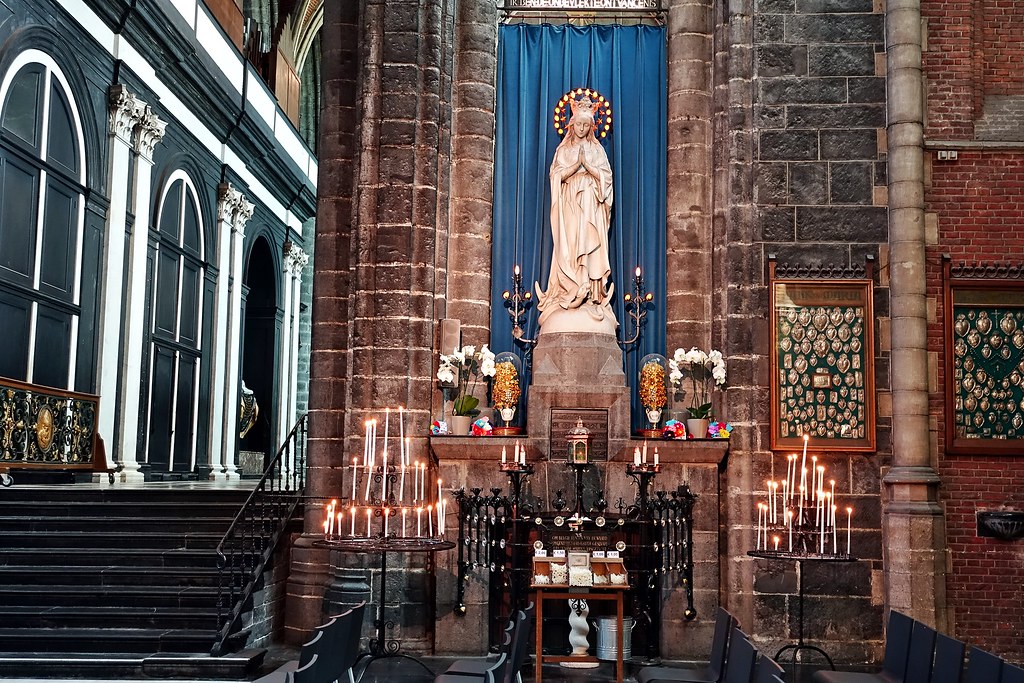
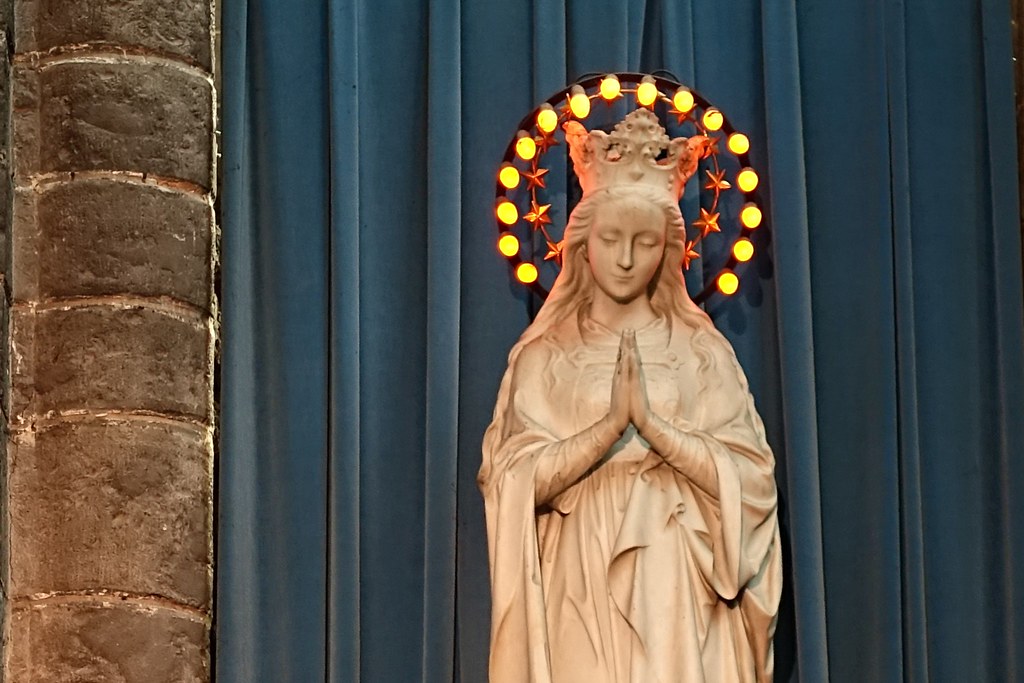
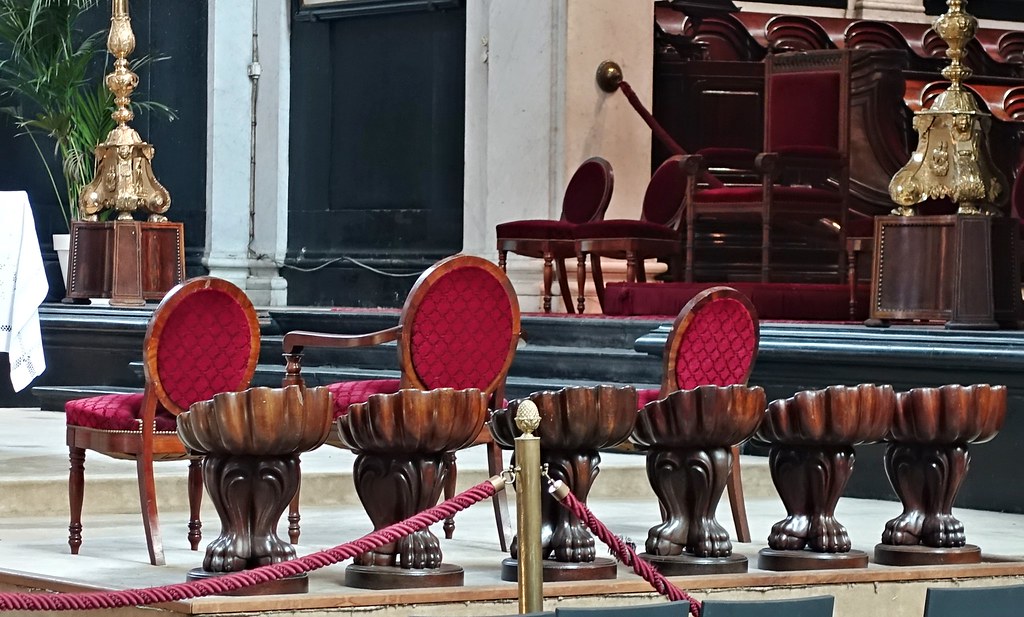
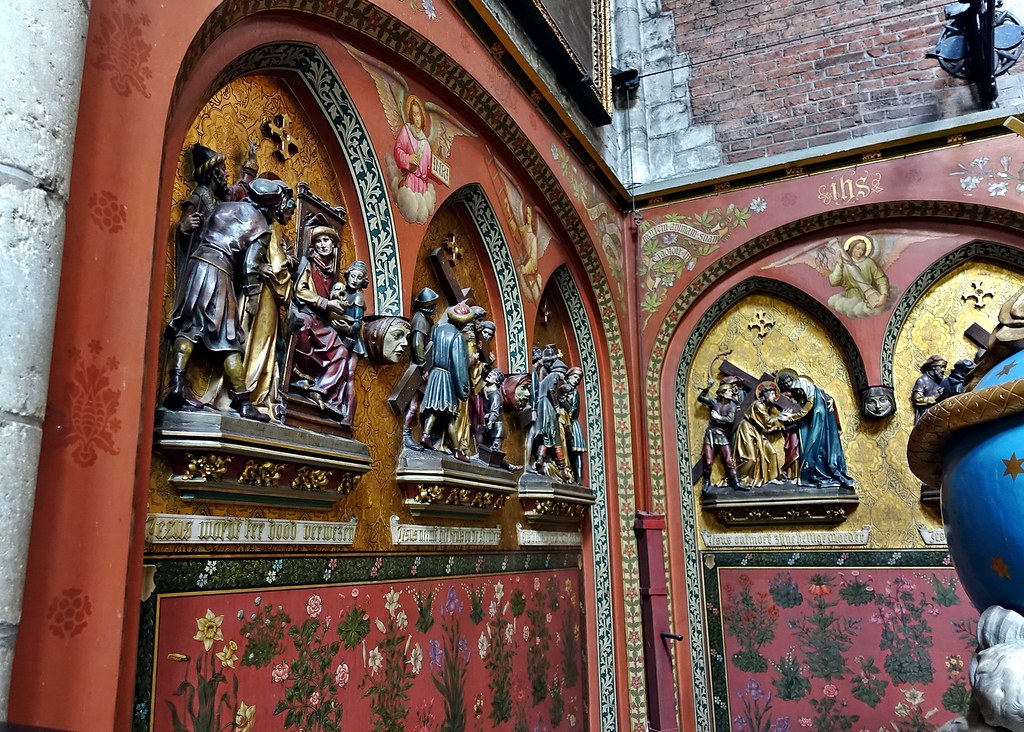
Past the Stations of the Cross we go, on to the right to exit through the gift shop, as one does ~
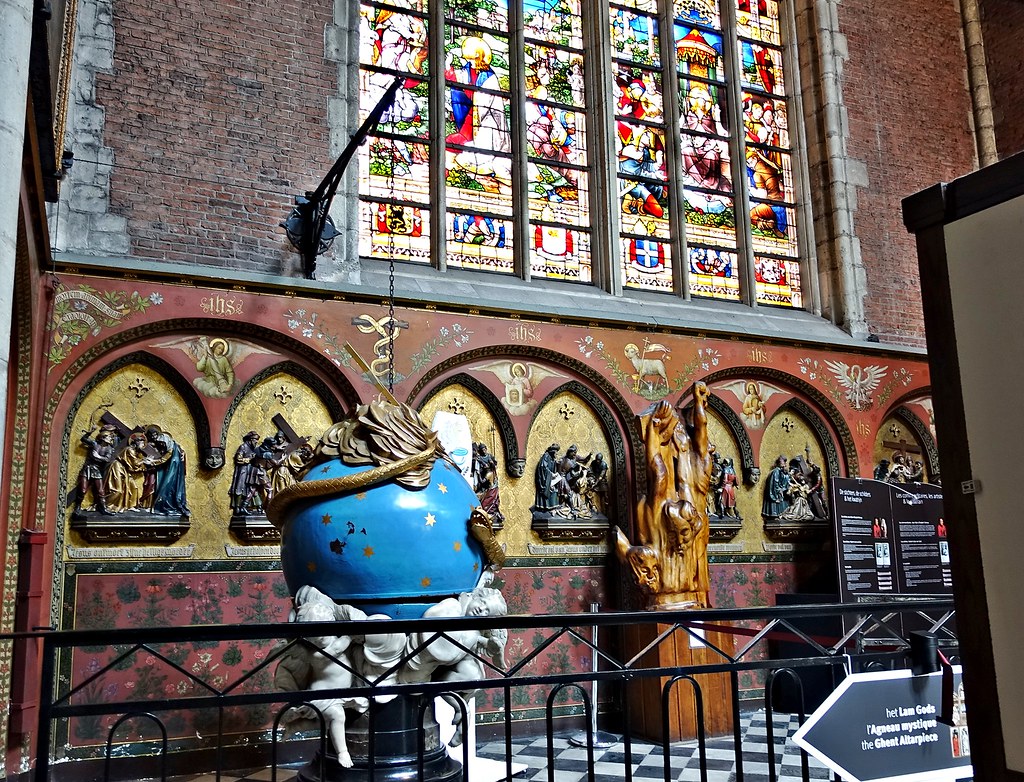
And back outside you can clear your visual palate with the bright sky and some more of Ghent's architecture ~
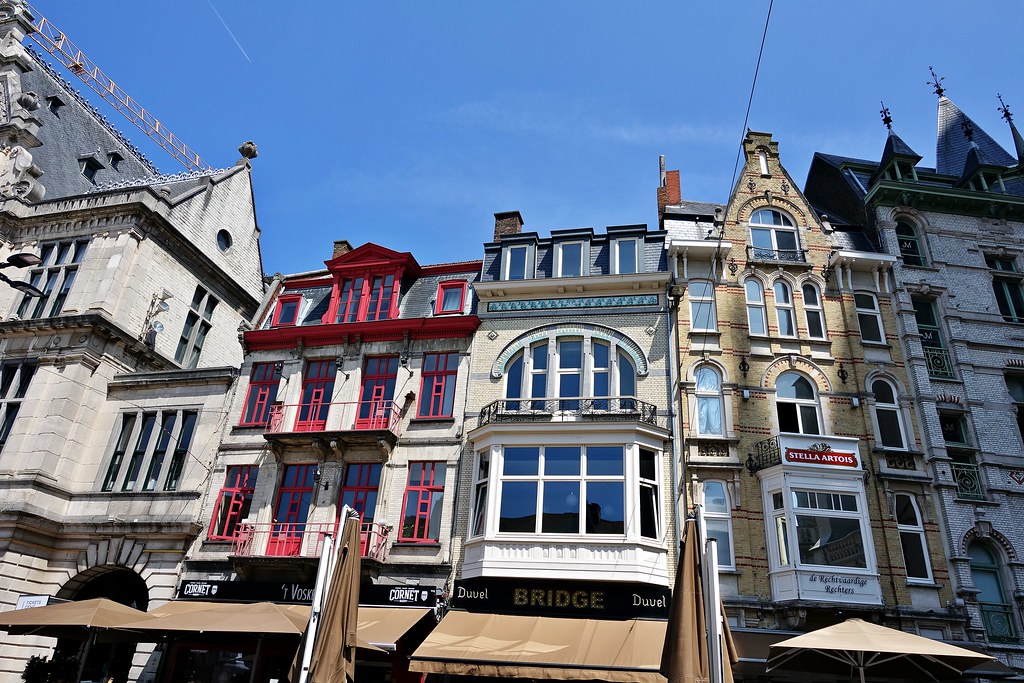
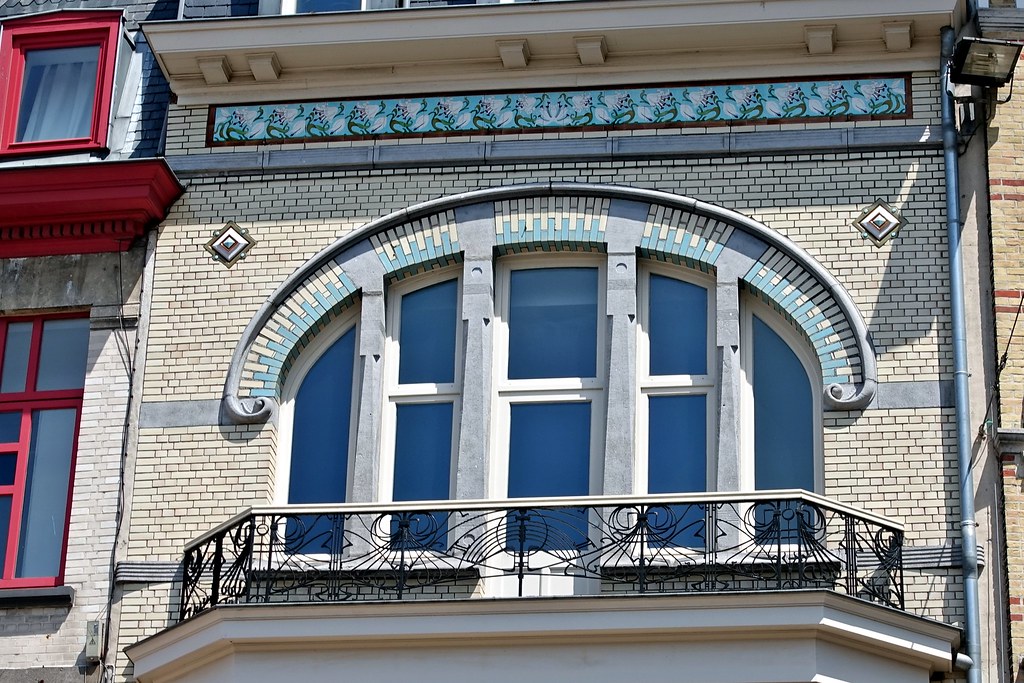 |
|
|
|
Post by bjd on Jan 12, 2019 6:05:42 GMT
I'm not sure that I would go to any city just to see one artwork, but I'm sure glad you did, Bixa. Ghent looks wonderful. Somehow I associate Flanders with Protestantism rather than Catholicism so this is even more of a surprise. Unless of course, it all predates the Reformation.
|
|
|
|
Post by bixaorellana on Jan 13, 2019 3:02:48 GMT
Hee hee, Bjd ~ I figured that Ghent might also have a few more things of interest. Anyway, thank you. I'd love to go there with you, as you are a tireless walker and it's a great city to explore on foot. There is way more there than I saw in my brief visit. I was also surprised at all the Catholic churches. Below is an excerpt from Wikipedia. This article is also illuminating. Religion in Belgium is diversified, with Christianity, in particular the Catholic Church, representing the largest community [at 52.9%] though it has experienced a significant decline since the 1980s (when it was the religion of over 70% of the population). ...
16th century: Protestant Reformation
... In 1523, Belgium became the site of the first martyrdom of Lutherans by the Catholic Church, as two Augustinian monks, Johann Esch and Heinrich Voes, were burned at the stake in Brussels for their conversion to the Lutheran doctrine. Before the end of the century, however, Belgium was part of the Spanish Empire, which showed as little tolerance for complacent or liberal Catholics as for Protestants. One of the effects was that Catholics—fearing the Inquisition and preferring to live with Protestants who would, at least, tolerate them—migrated in large numbers to the Dutch Republic.
17th–18th century: Catholicism as the state religion
From the Spanish military conquest of 1592 until the re-establishment of religious freedom in 1781 by the Patent of Toleration under Joseph II of Austria, Catholicism was the only religion allowed, on penalty of death, in the territories now forming Belgium. However, a small number of Protestant groups managed to survive at Maria-Horebeke, Dour, Tournai, Eupen, and Hodimont.We will now visit the Bell Tower, a exceptionally fun and entertaining activity.
Three medieval towers loom over the old city -- the Cathedral, St. Nicholas church, and Ghent's belfry which, at 91 meters, is the tallest in Belgium.
No exterior picture at the moment, but you can see the belfry in many I've already posted and it will show up in many still to be posted. Let's trot on in and look around.
Entering we see a couple of the dragons which have flown atop the tower since 1380, along with a model of the top of the tower and the carillon bells ~
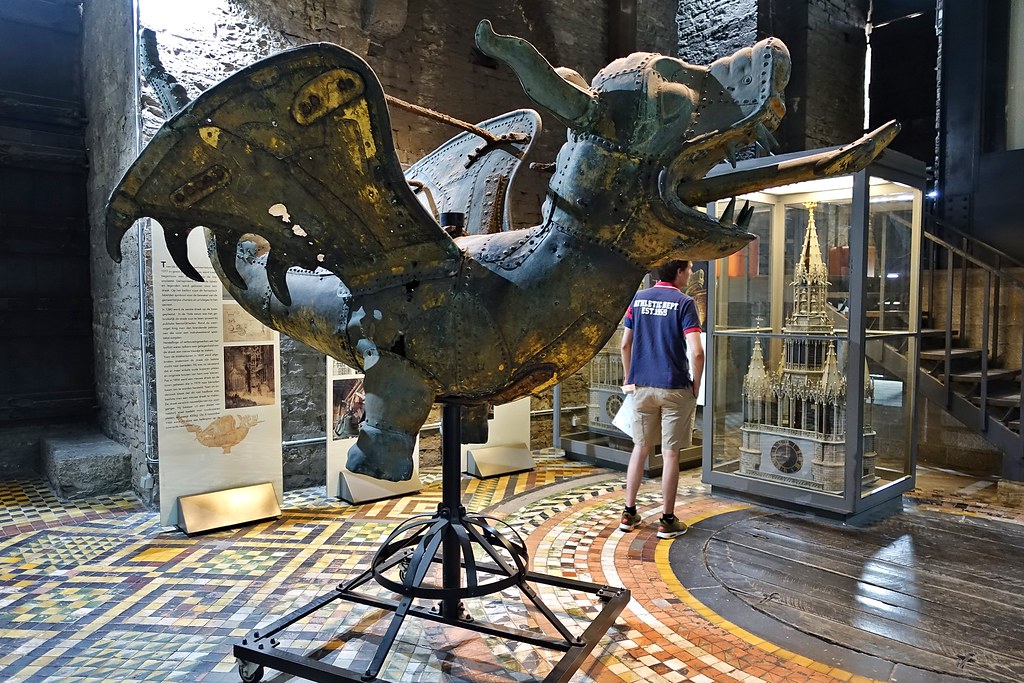
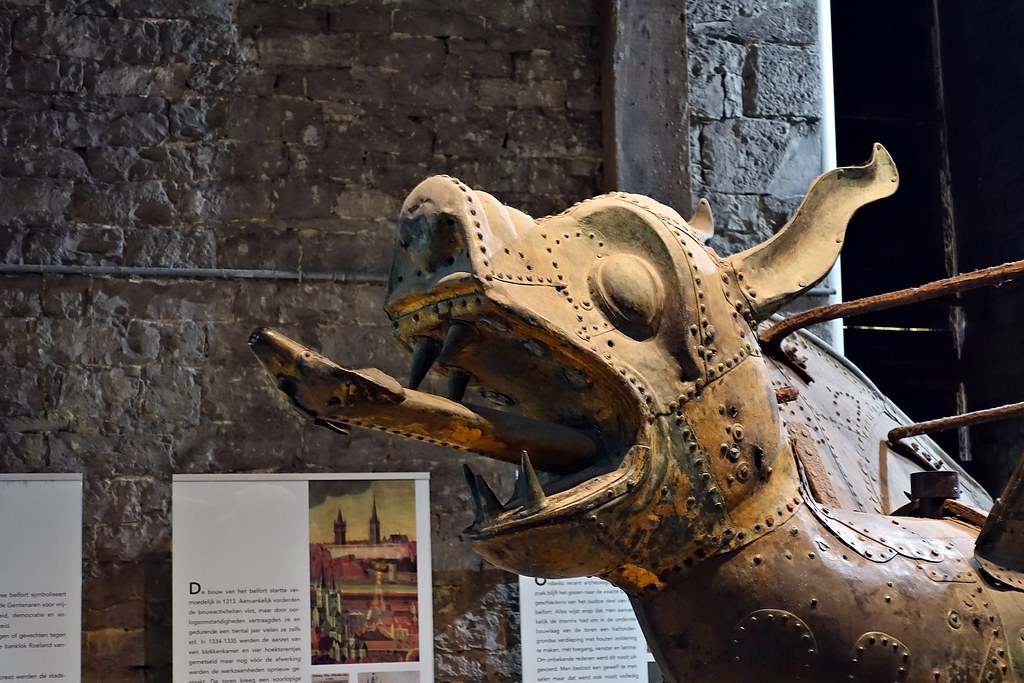
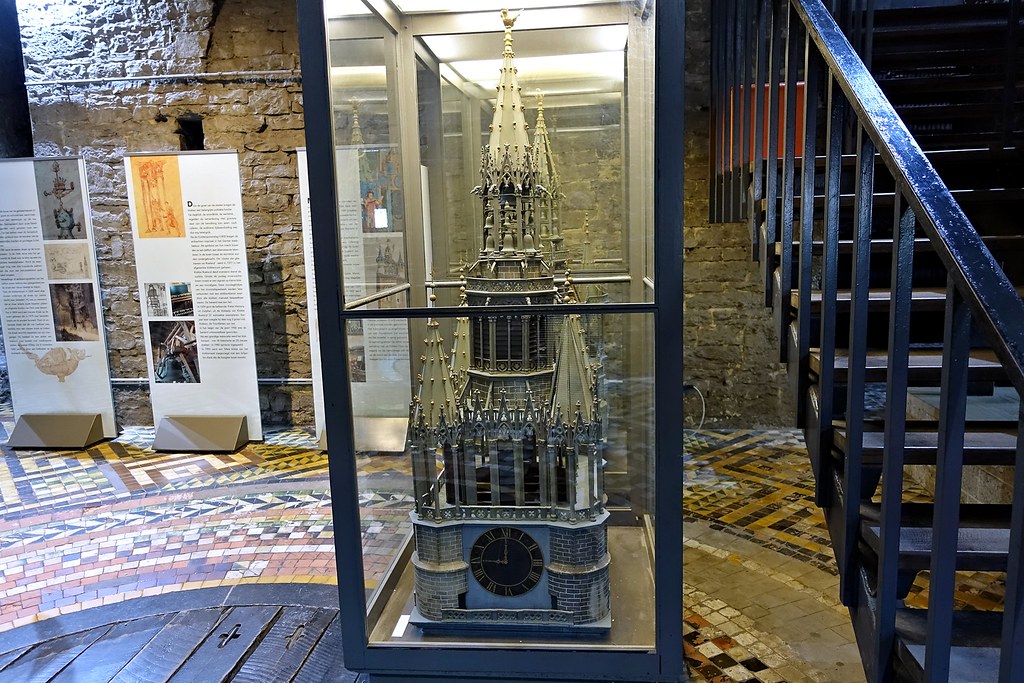
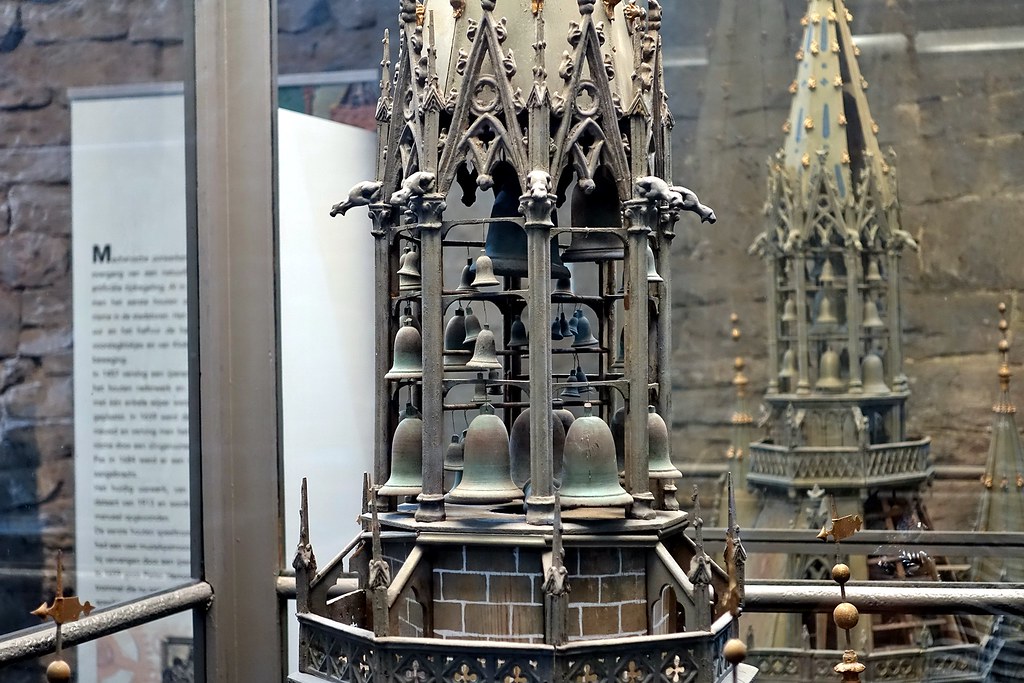
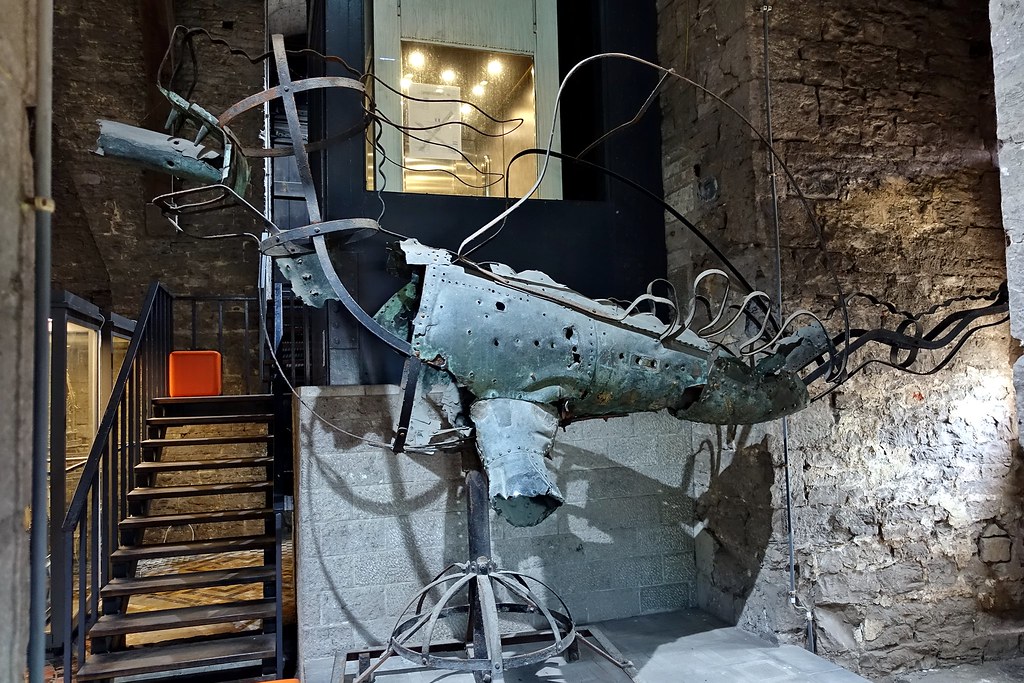
The bells ~ the bells ~
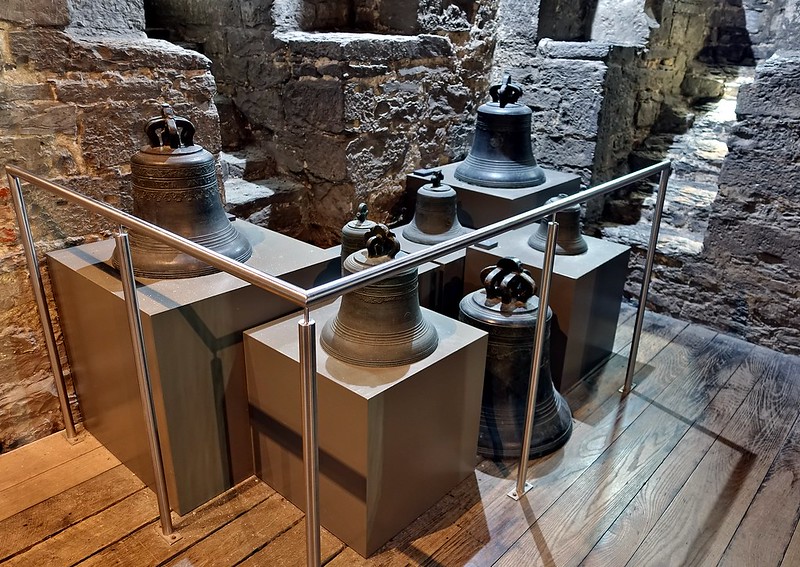
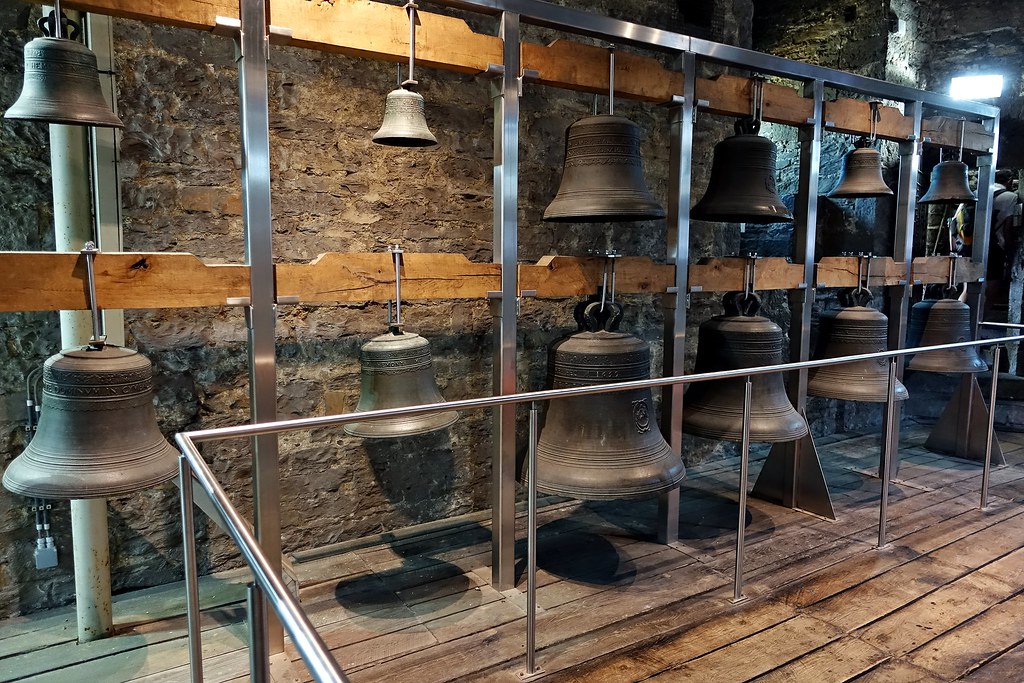
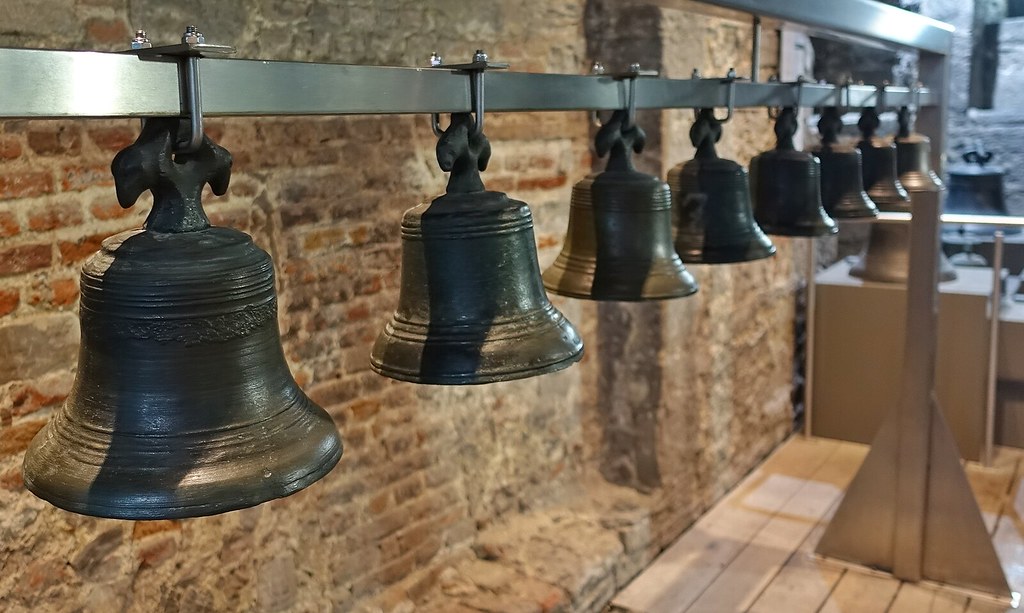
The counter-weights for big bell Roland ~
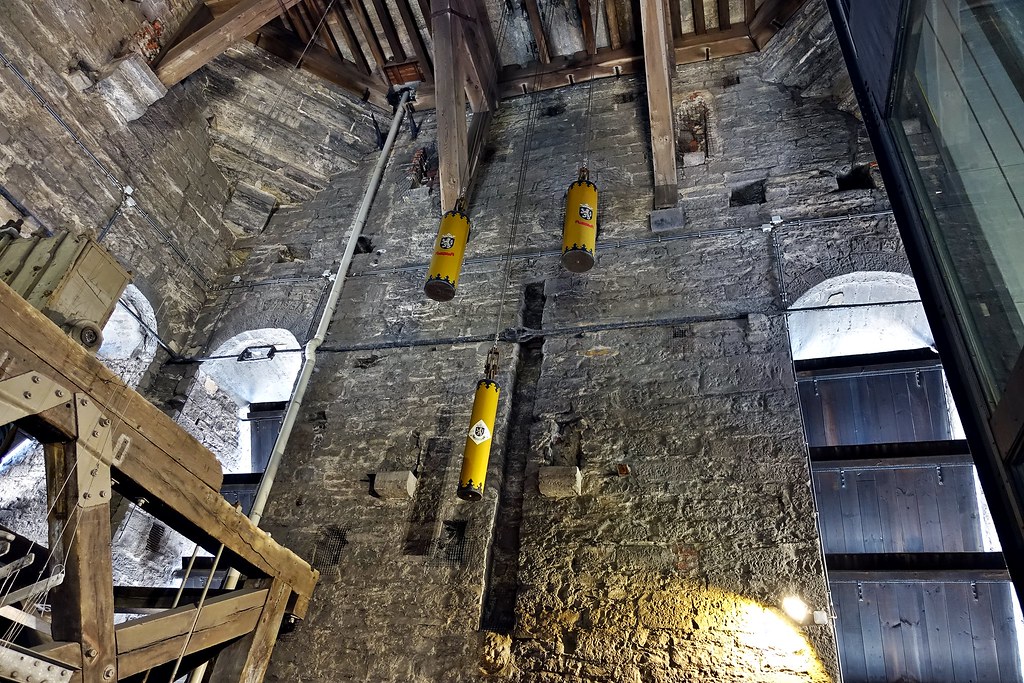
I guess this clapper is just lying around in case the bells need to be struck by hand. I tried to heft it. Ha ha ha -- it didn't budge the tiniest bit ~
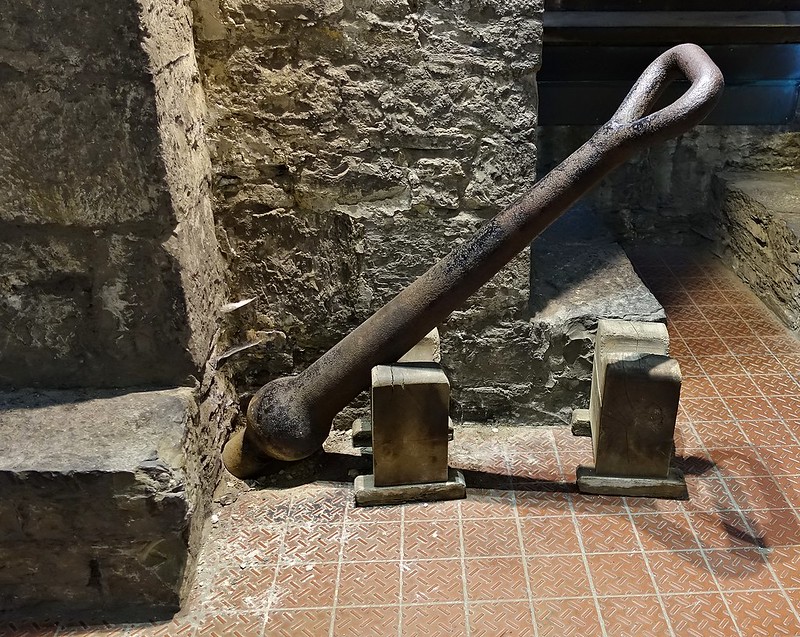
Big Roland ~
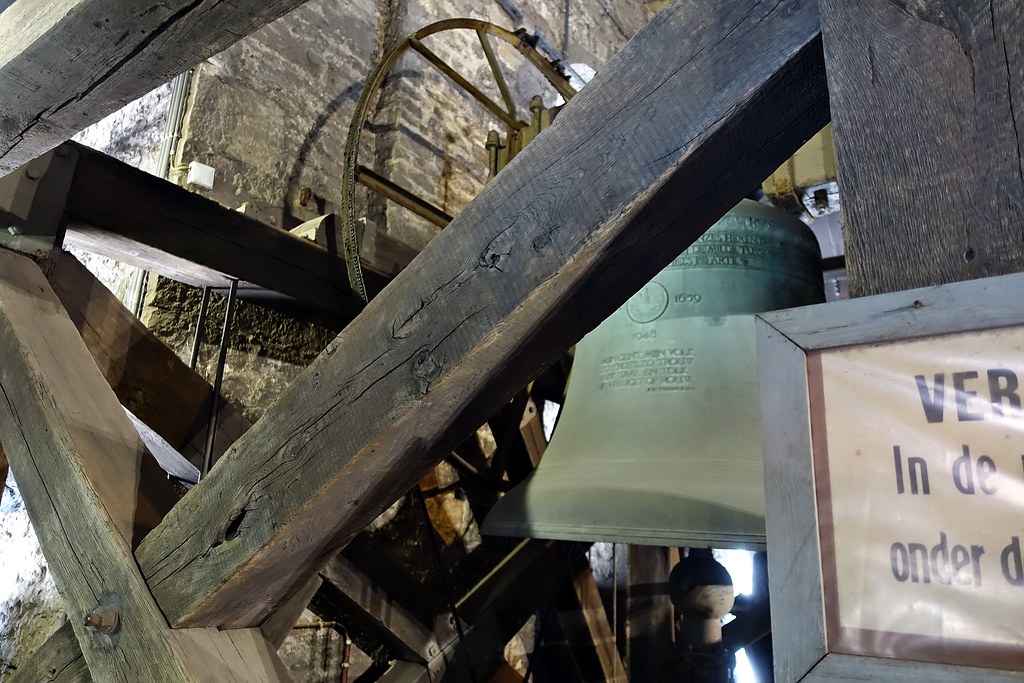
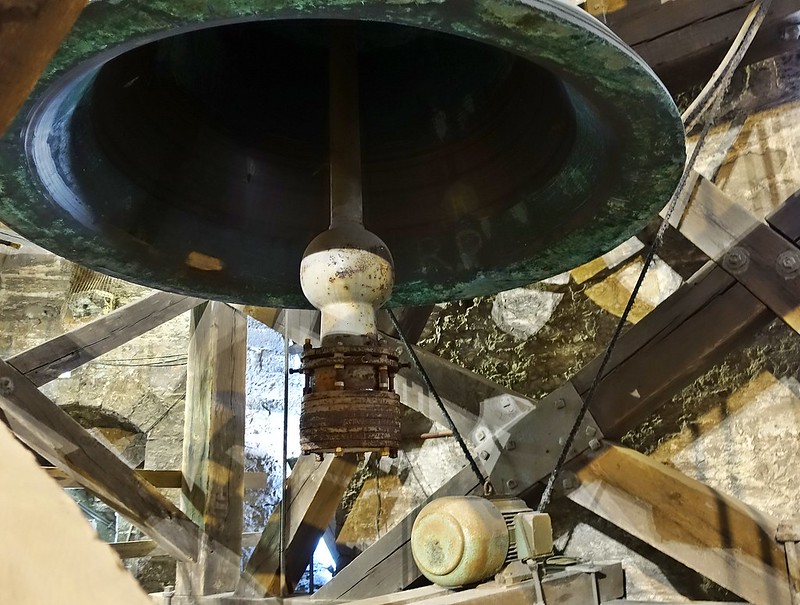 |
|
|
|
Post by bixaorellana on Jan 13, 2019 3:30:17 GMT
This section totally fascinated me. I sat through one session of the bells striking, then returned for a second after my visit to the outer tower.
The copper drum was built in 1659 and weighs 2105 kilos, not including the frame. The wires pass to the room above to control the bells.
I urge you to read this either before or after or perhaps while looking at the pictures: www.kenneththeunissen.be/carillon-gent/the-drum.html ~

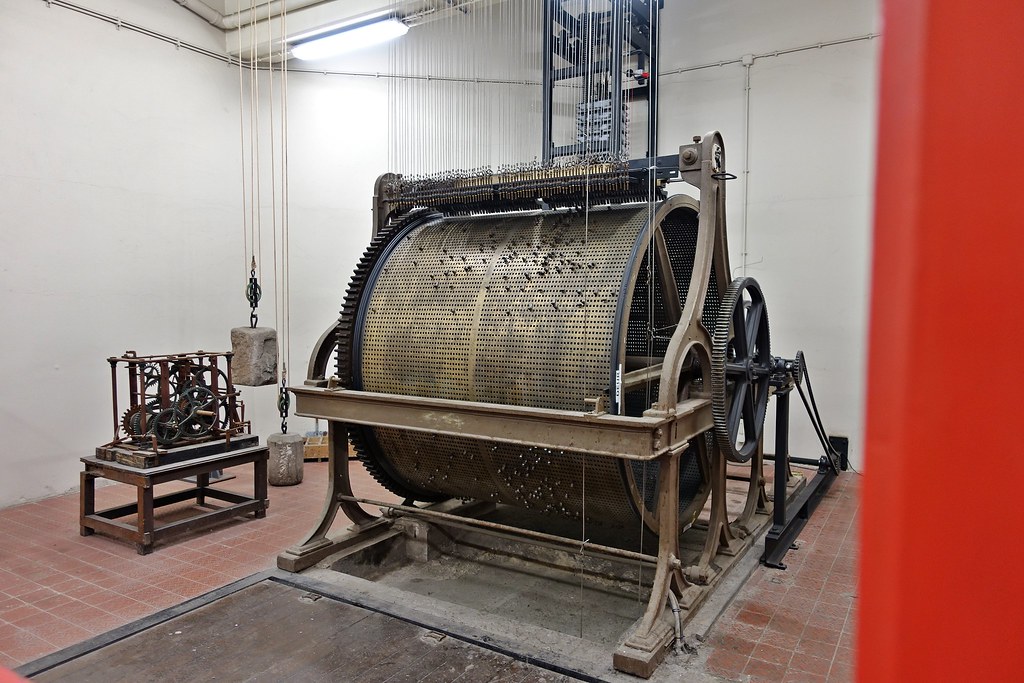
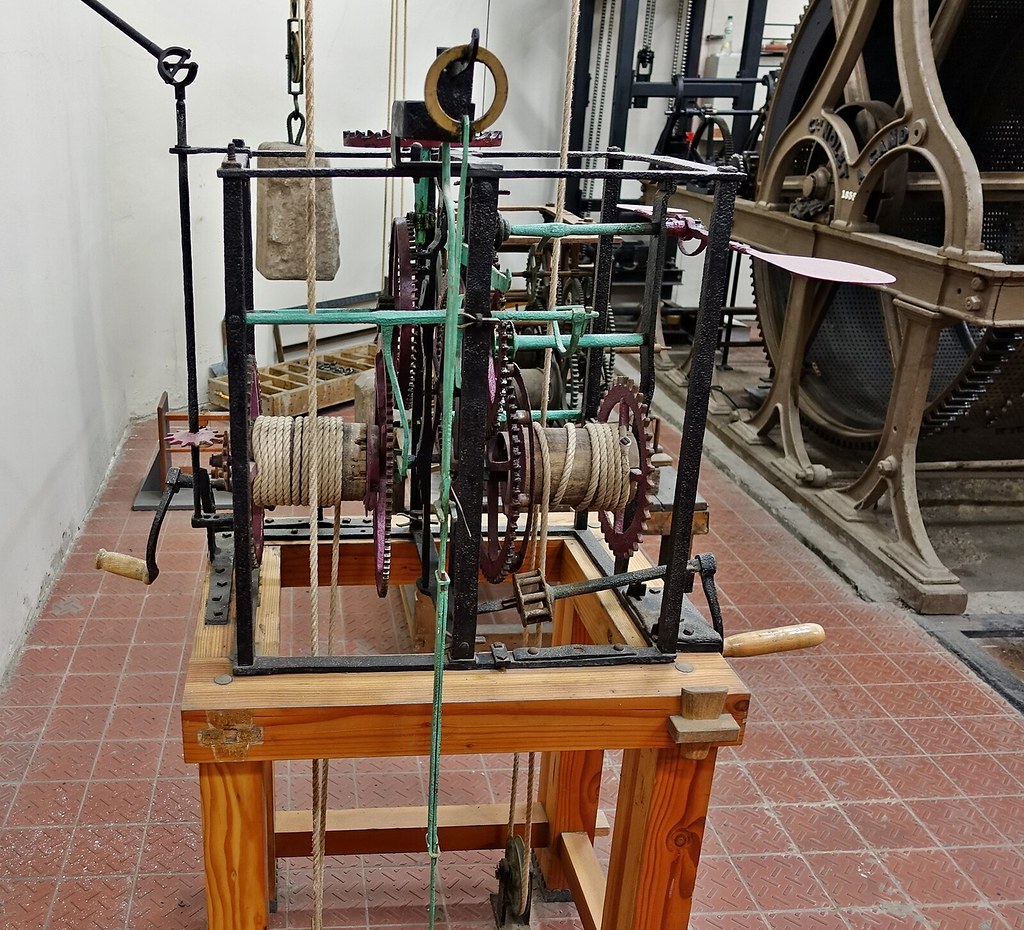
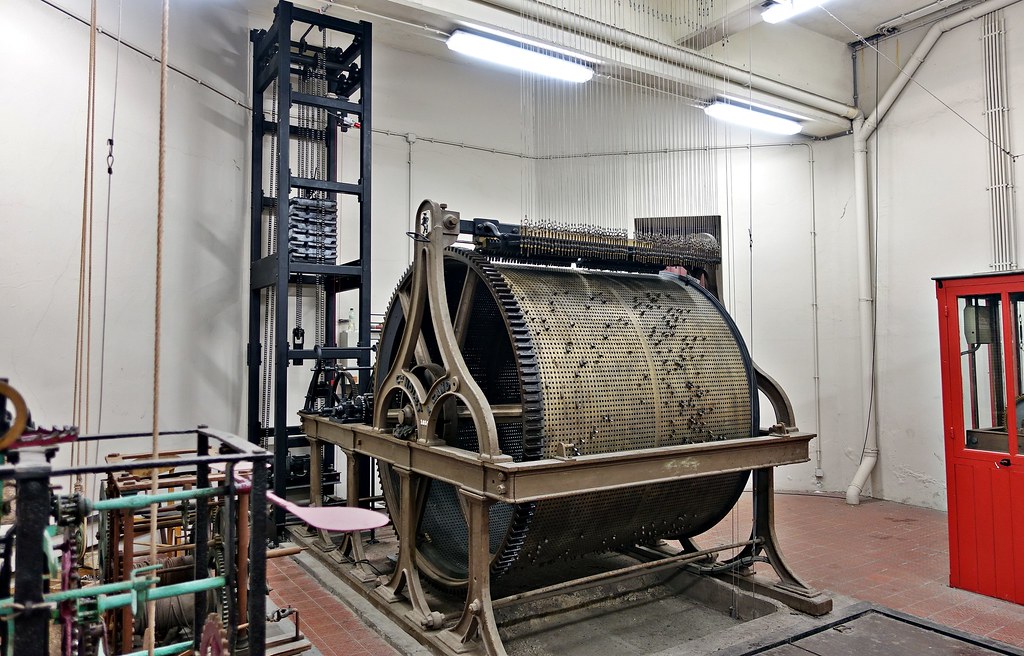
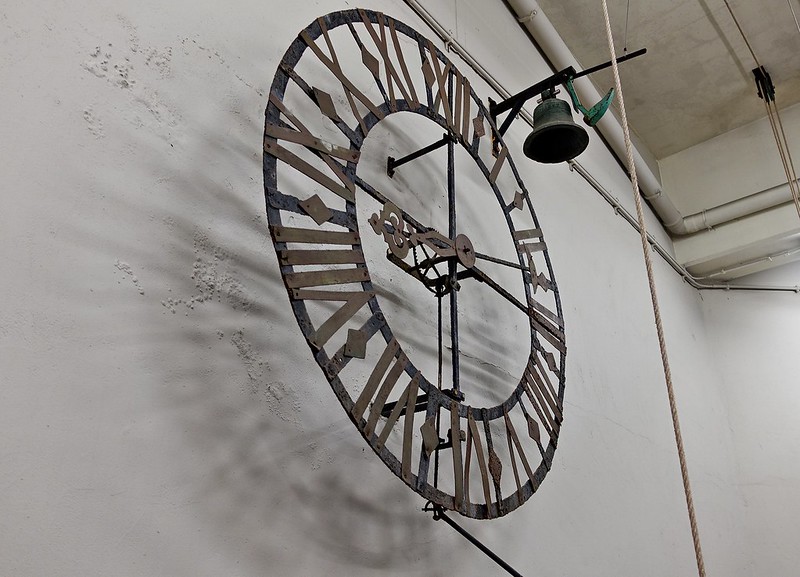
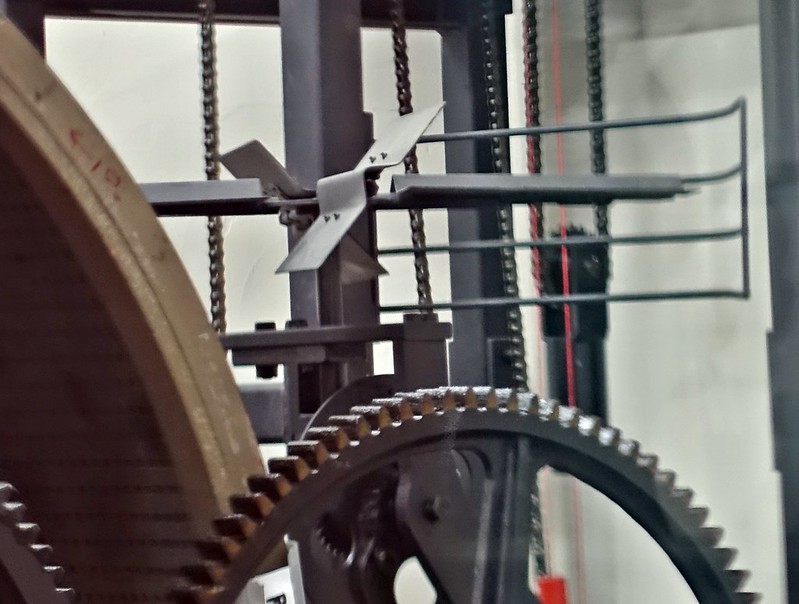
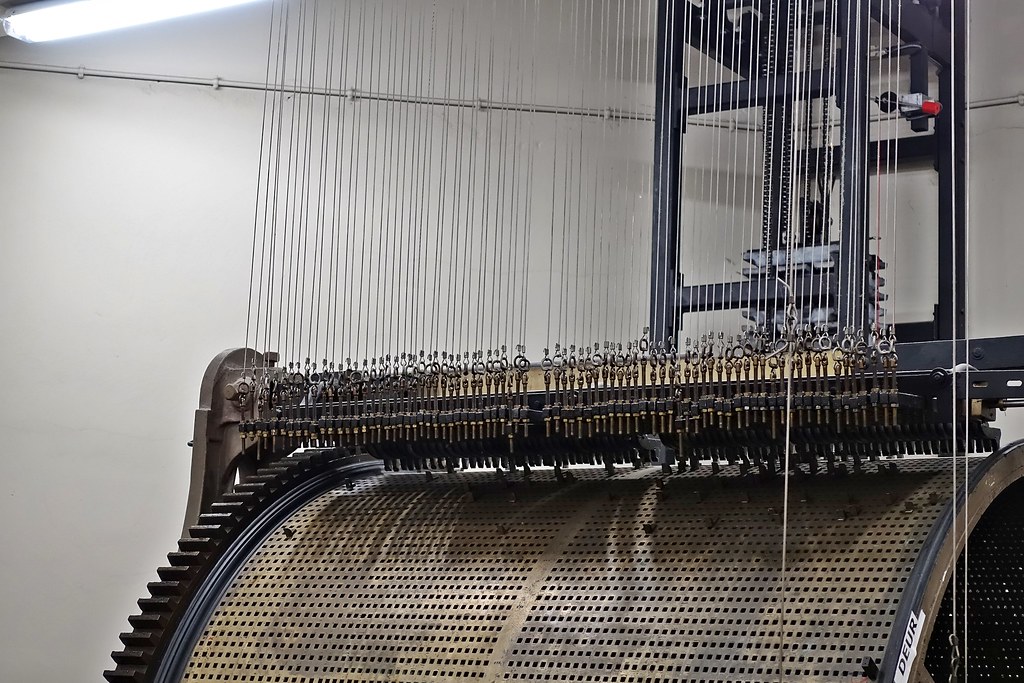
Zillions of things to adjust!
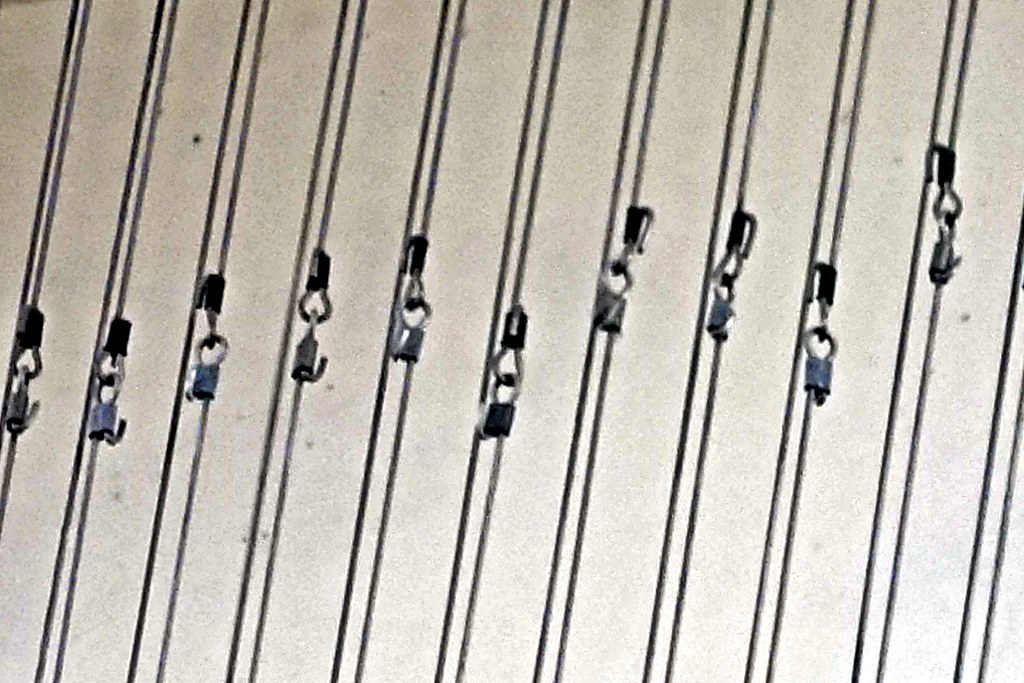
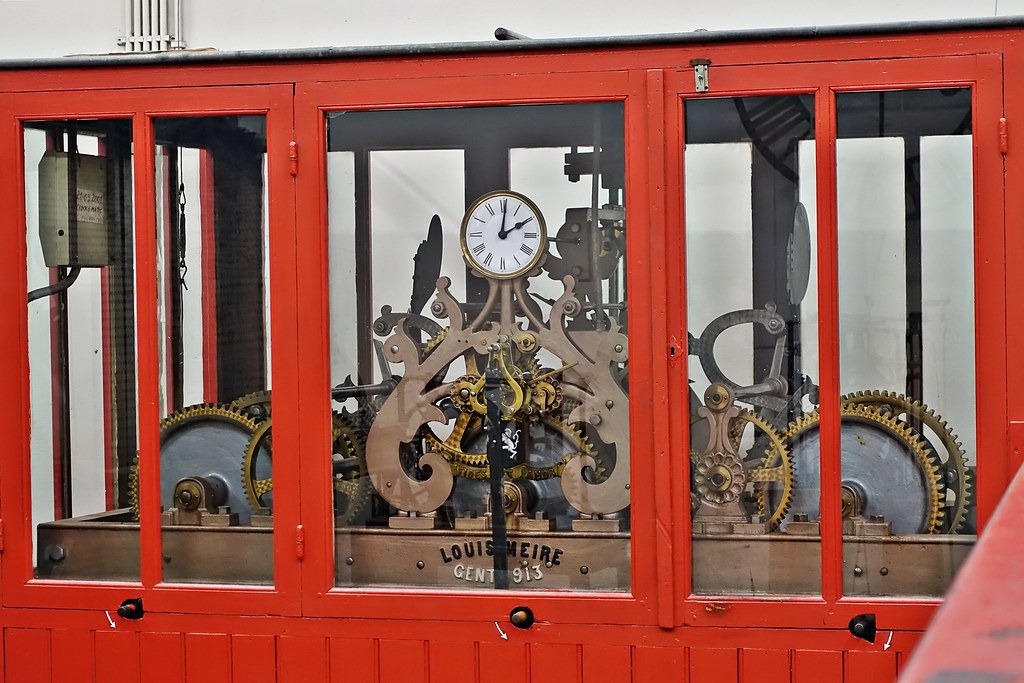

Note all the lines and wires connecting all the things in the room to each other ~
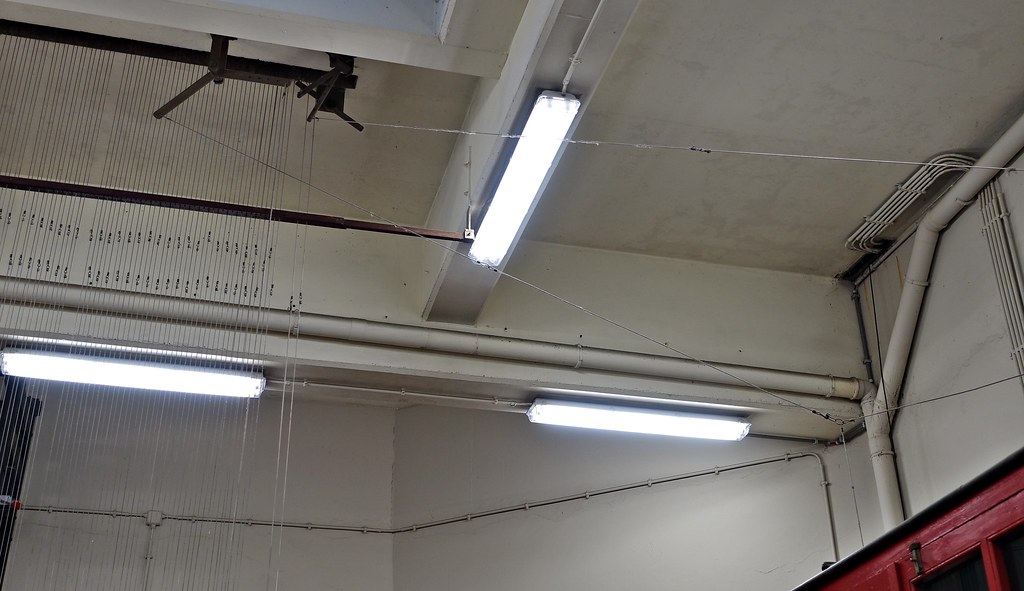
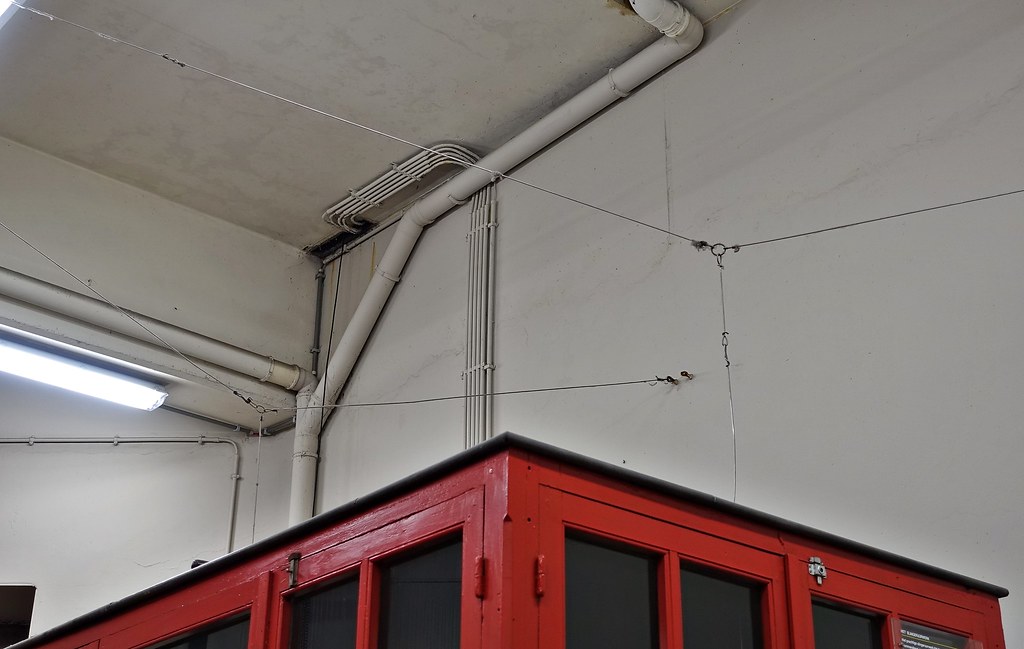 |
|